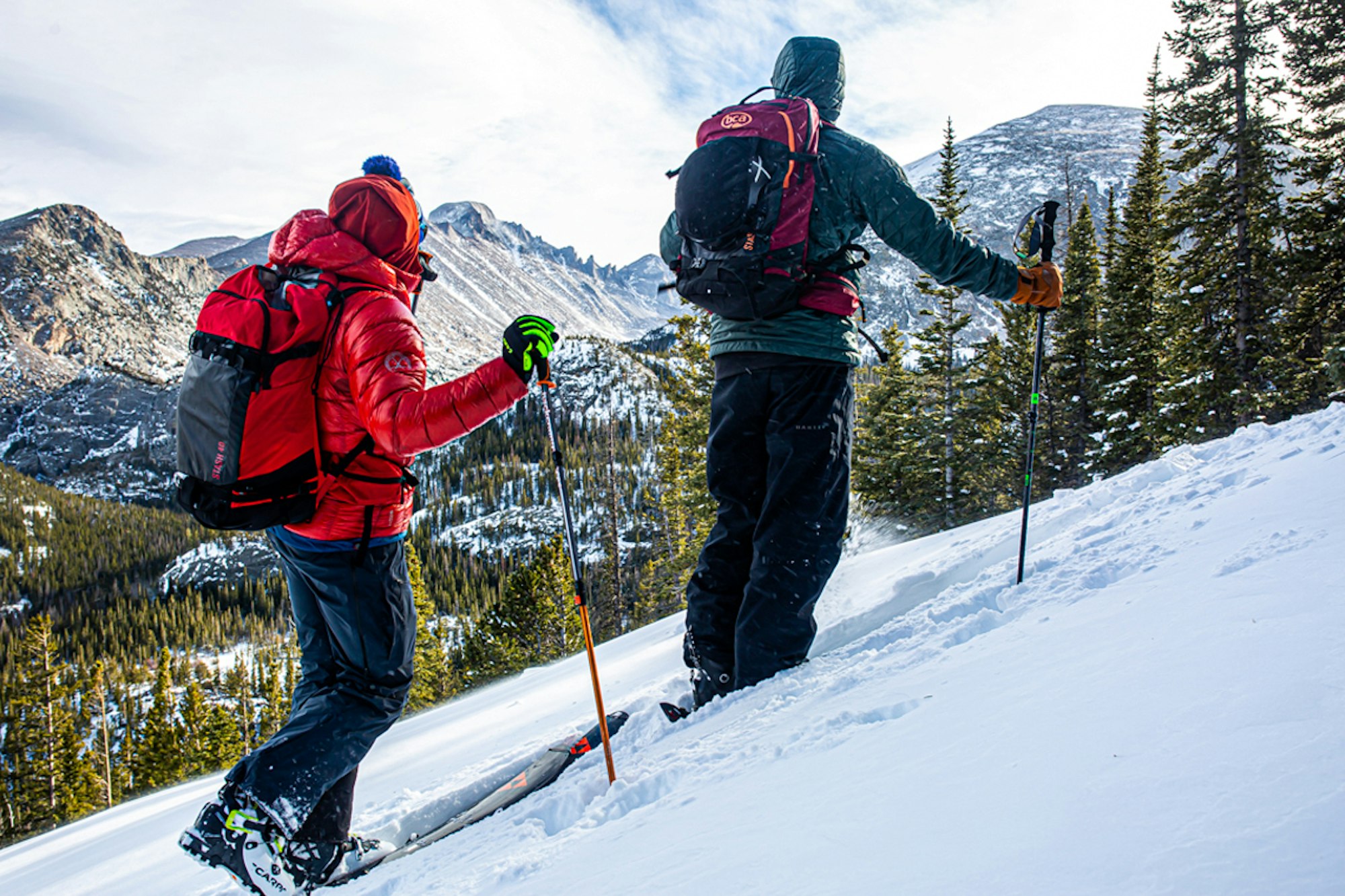All Photos: Donny O’Neill
There are few things better than exploring the backcountry on a pair of skis. It’s just you and your crew searching for untouched stashes, adhering to the message from the mountains in the welcomed silence of the wintery woods. But as beautiful as the backcountry is, it can also hold serious hazards. Like a trapeze artist in the circus, you have to be in tune with the inherent risks of venturing into the wilderness and away from the controlled environment of the resort.
As part of my role as assistant editor at FREESKIER Magazine, I am required to go into the backcountry for my job, as are my co-workers. While the staff has a variety of backcountry education and experience, FREESKIER sought out the Colorado Mountain School (CMS) in Estes Park for a three-day AIARE 1 avalanche course to prepare for winter 2020. At the close of our session with CMS, equipped with a new set of skills and an overflowing trough of knowledge, everyone in our crew felt much more prepared for backcountry travel. An AIARE 1 course is the kick-start to a lifelong avalanche education journey and benefits everyone, even those who are just curious about backcountry travel, whether that be on skis, a sled or snowshoes. Because in the mountains, knowledge is power. To better prepare you for your first AIARE 1 course, we’ve highlighted everything you should know before you go, below, so you can spend more of your time with your head in the snow.
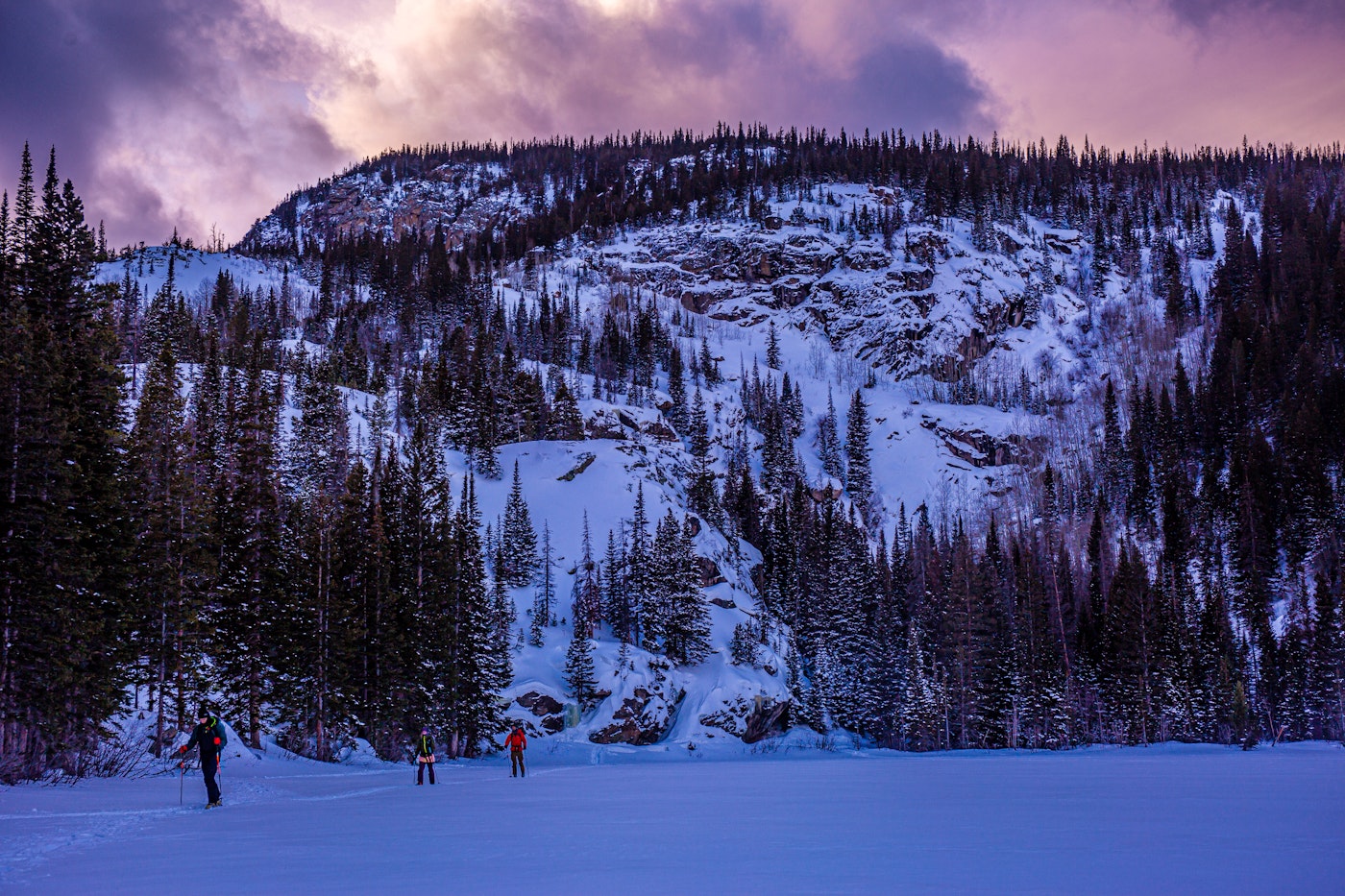
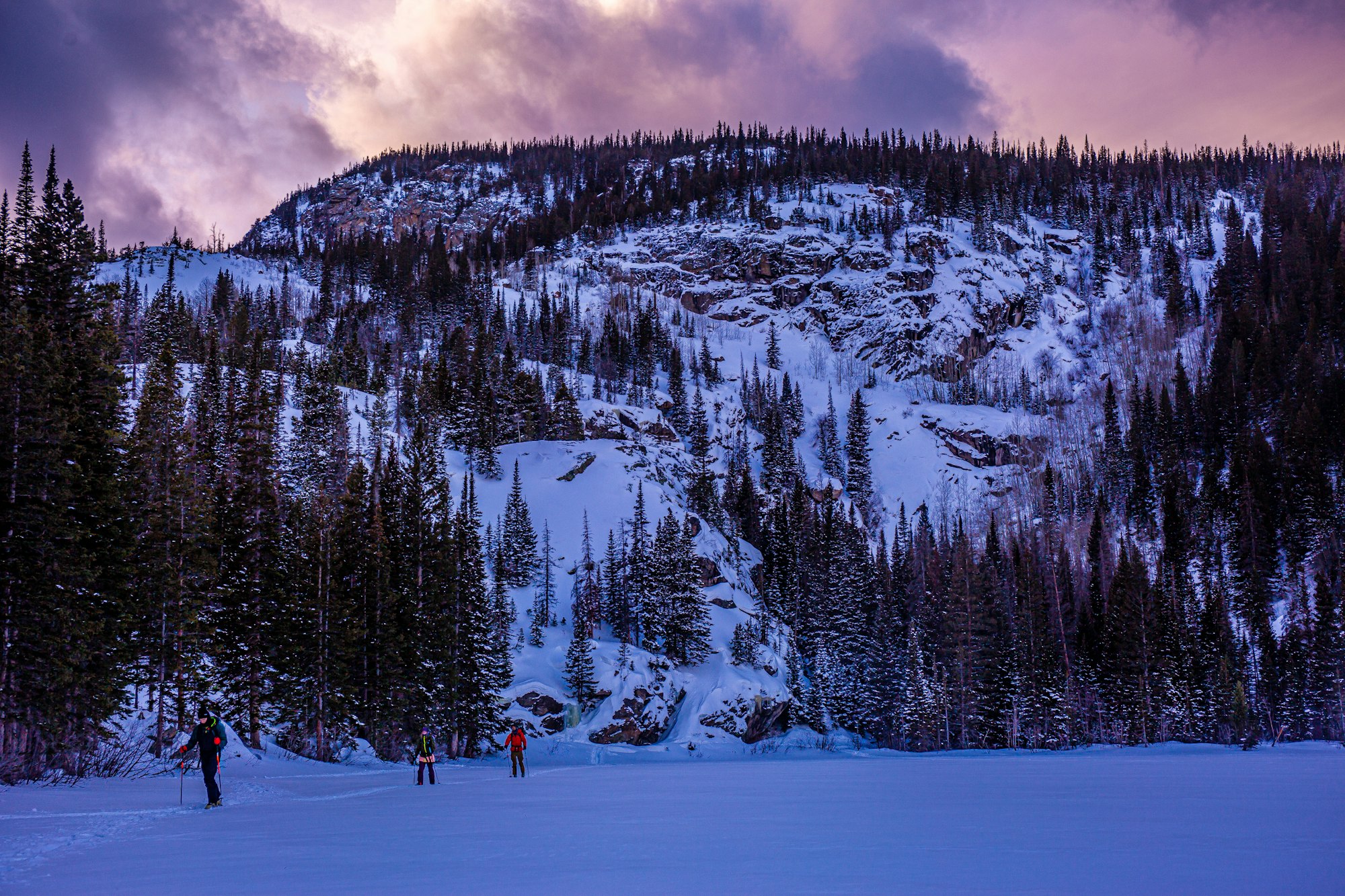
The first day of our AIARE 1 course capped off with a gorgeous sunset skin back to the parking lot.
Not all guide services are created equal
Unfortunately, not all guiding services are as great as they claim to be. It’s important to do your research before signing up for an AIARE 1 course to ensure you’re in good hands. Reach out to peers for recommendations, give Google a good comb-through and look for the American Mountain Guides Association (AMGA) accreditation, like Colorado Mountain School has. CMS was founded in Estes Park in 1981 and has developed into Colorado’s largest guiding company and one of the country’s best AIARE avalanche course providers. CMS guides are seasoned veterans in the mountains with years of guiding experience not only in the local ranges but on peaks around the world. Our lead guide, Joey Thompson, is certified with the International Federation of Mountain Guides Association (IFMGA)—the most rigorous mountain guiding certification in the world—and has more than a few seasons guiding in the French Alps to show for it. Like a lioness teaching her cubs to hunt, Thompson aims to teach his students not only how to survive in the mountains but to thrive. Our second guide, Ben Markhart, has been guiding with CMS for the last five years and knows the Rocky Mountain terrain like the back of his hand. Although he’s originally from Minnesota, as soon as you slide on to the skin track with Markhart, it’s evident he’s most at home in the mountains.
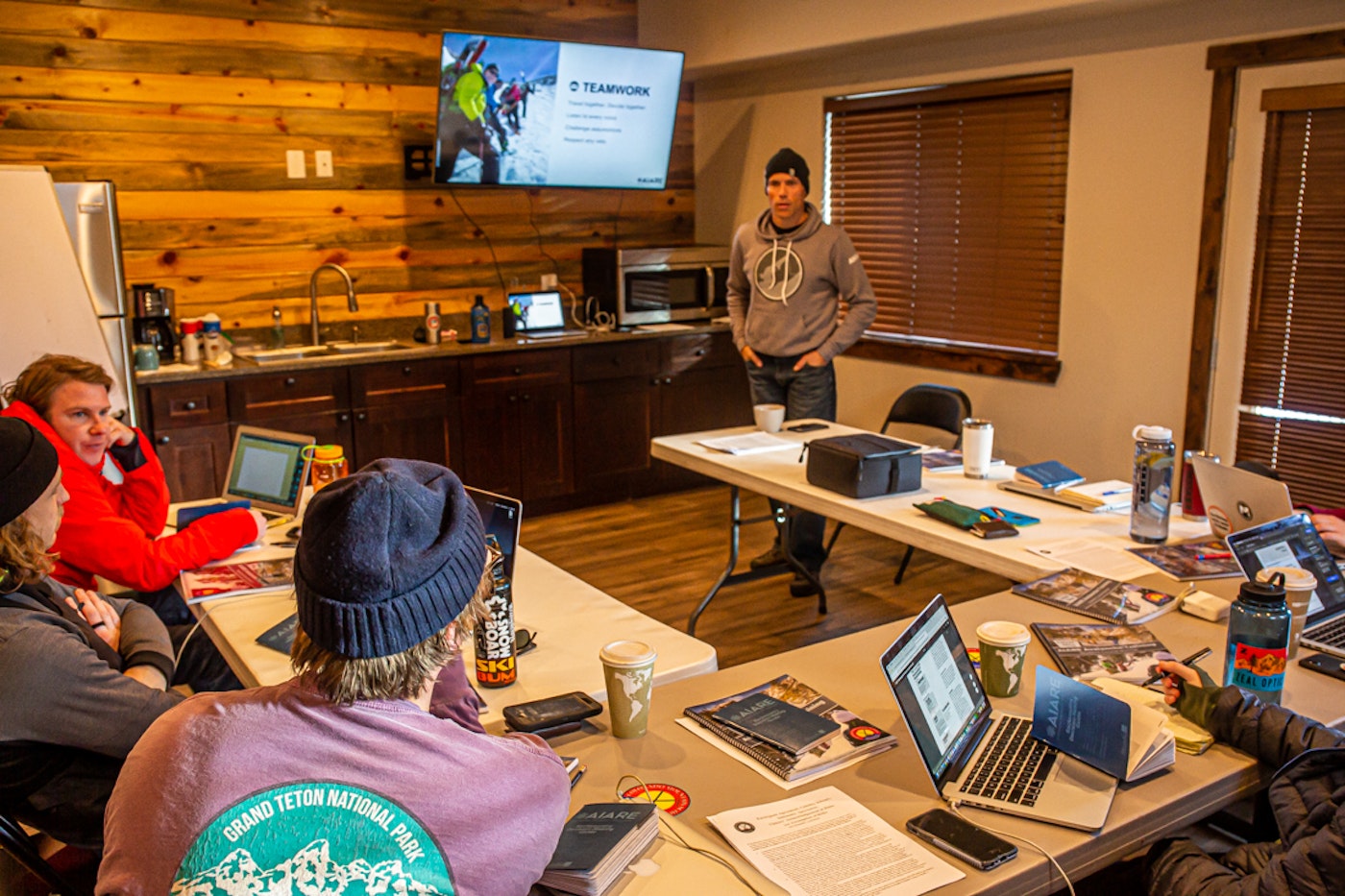
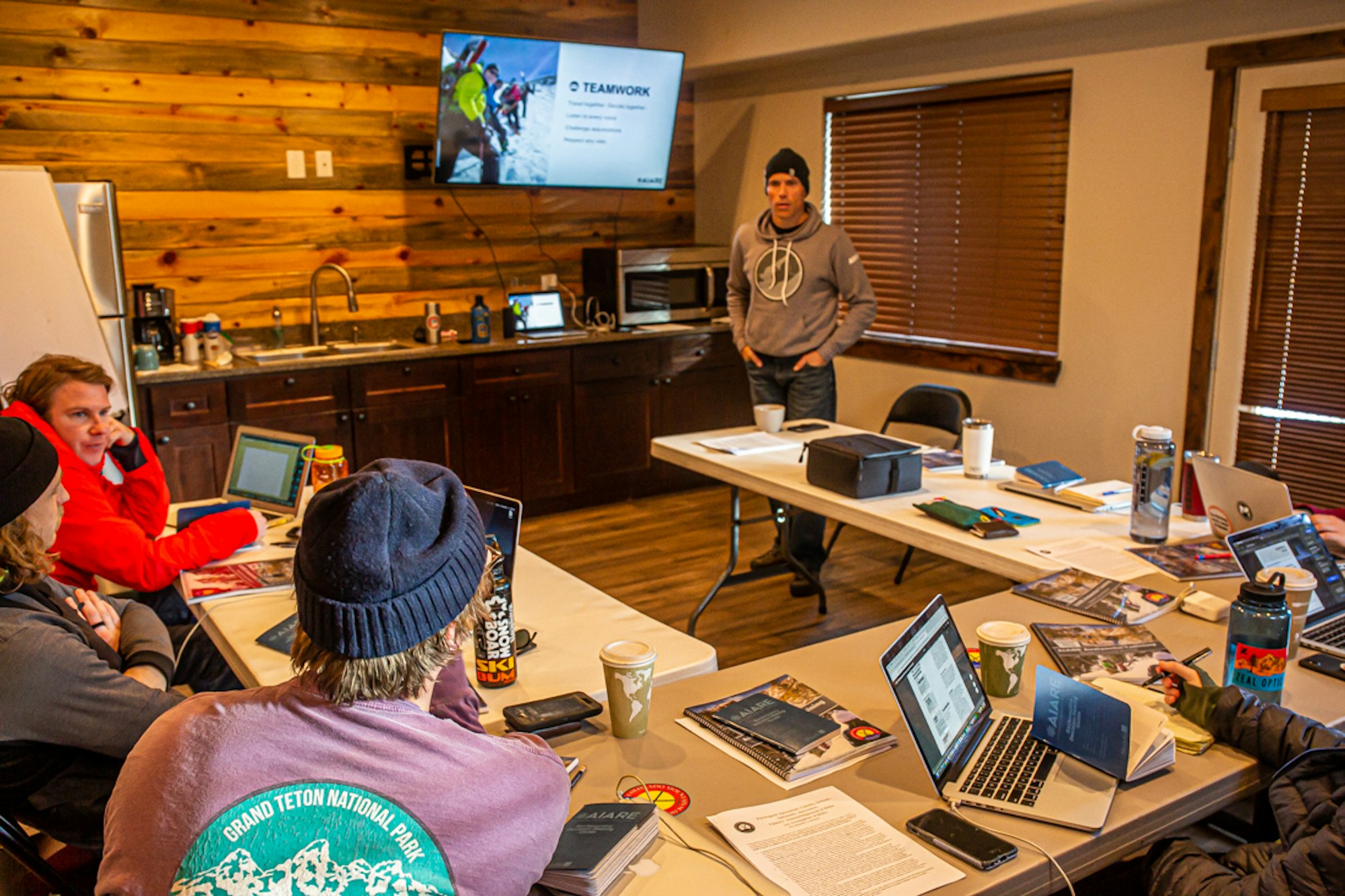
Teamwork is a key component of the AIARE framework.
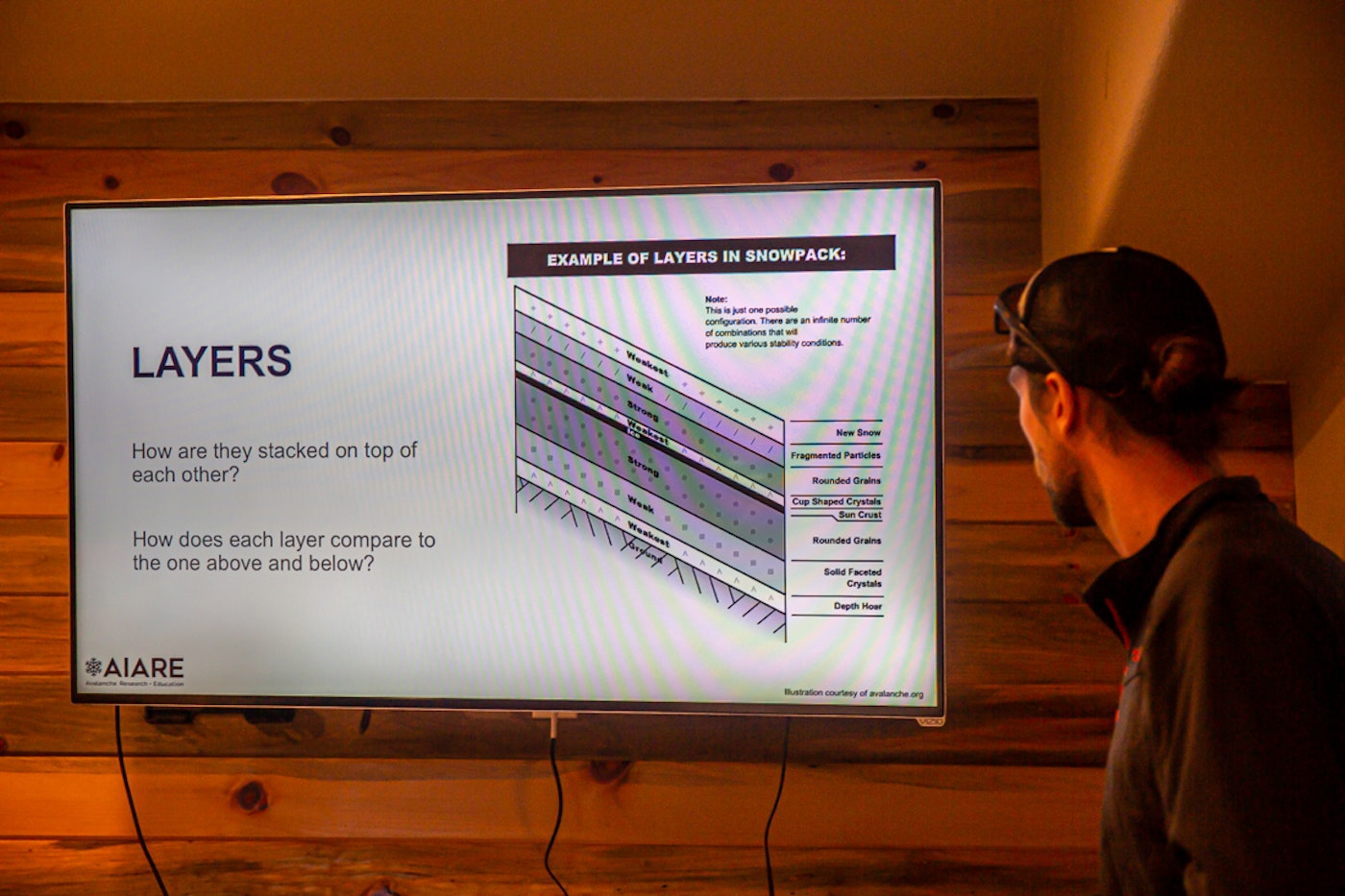
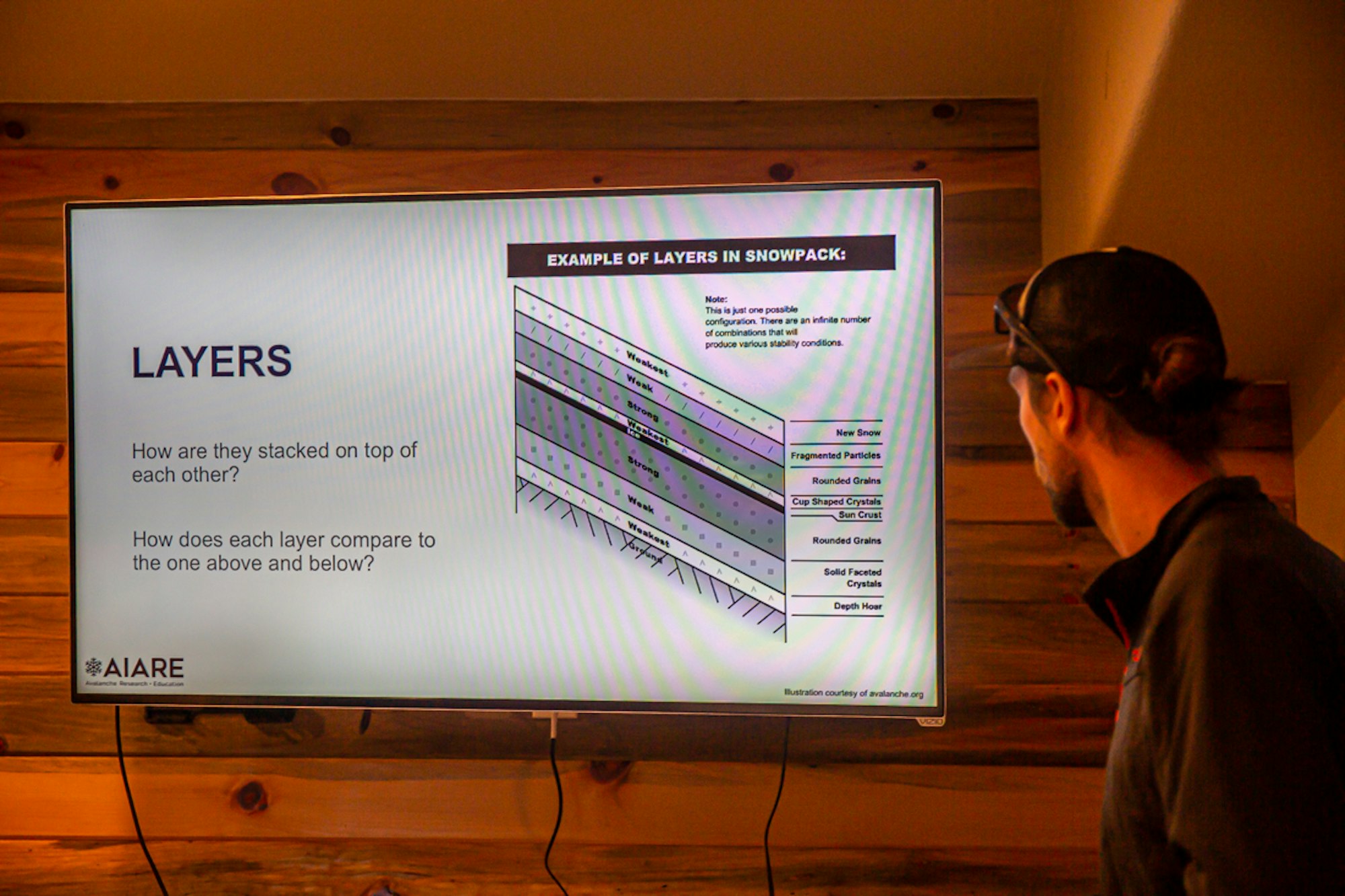
Guide Ben Markhart discusses layers in the snowpack.
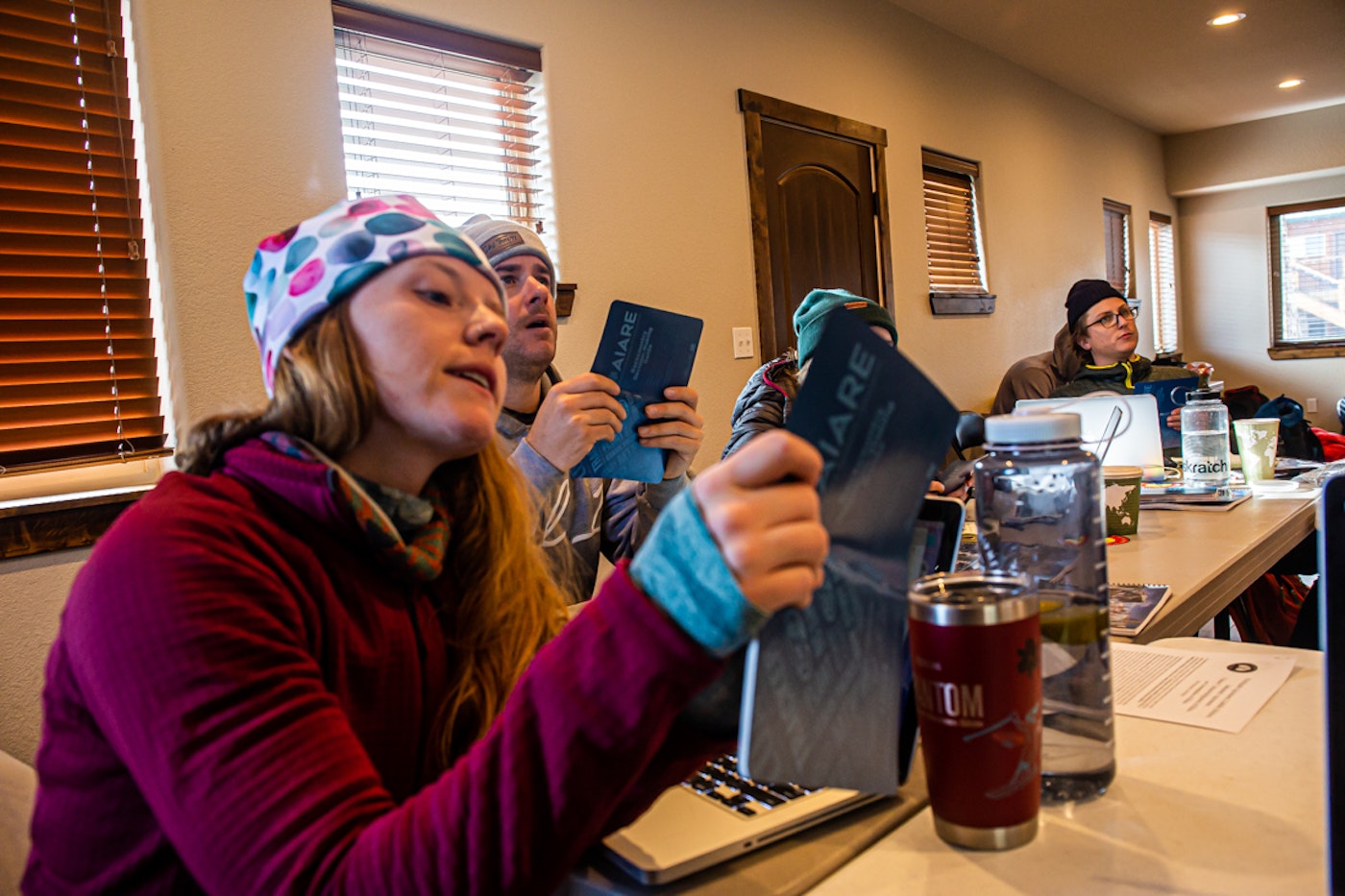
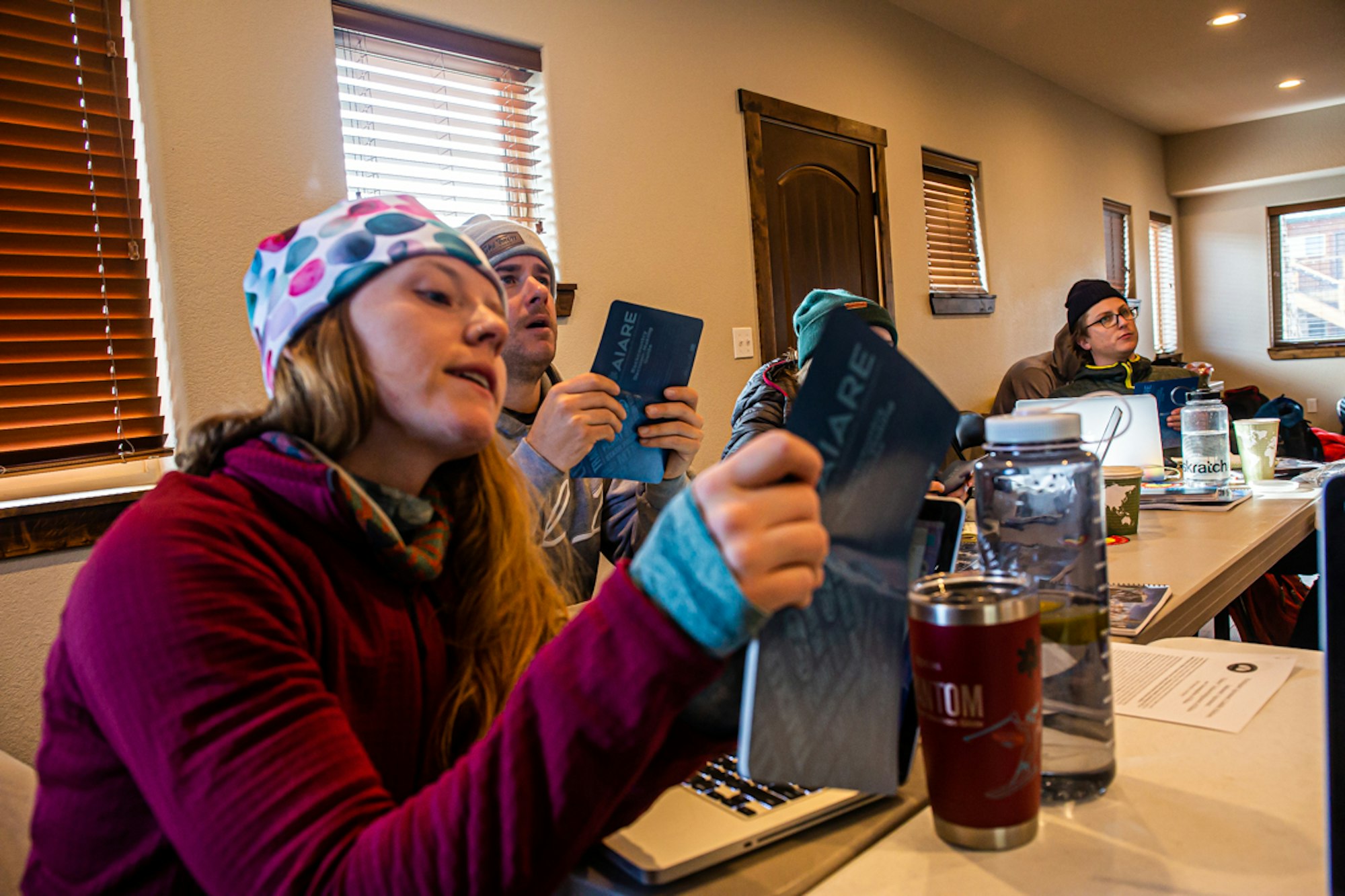
Your AIARE Field Book is your best friend in the backcountry.
You’re going to get buried… in information
AIARE 1 is an introductory course. You’re going to be acquainted with the basics of avalanche safety, from types of slides (why they occur and how they’re triggered) to identifying avalanche terrain, how weather affects the snowpack, trip planning and avalanche rescue, should a slide occur. If you start to feel overwhelmed, don’t worry. There is a lot of information being thrown at you over the three days and no one expects you to be an expert at the end of the course. AIARE 2 and Avalanche Rescue courses exist as part of the continuing AIARE curriculum for this very reason.
Along with your student manual, your guides are your best resource when you have questions. Markhart and Thompson had an infinite wealth of knowledge and provided a no-judgment zone for any and all queries. When it comes to avalanches and snow safety, there are no stupid questions… the only stupidity is remaining silent should a query pop into your head. Beyond the classroom, our guides advised us on what to pack for a day in the backcountry—based on trip distance and length, as well as group size and the weather forecast—how to communicate within a group and efficiently move on the skin track.
You’ll be given an AIARE Field Book. Use it and abuse it. Take notes of who you’ll be traveling with, the route you plan to take, the day’s weather forecast and areas to avoid based on the avalanche forecast–we utilized the Colorado Avalanche Information Center (CAIC) for the Front Range region of Colorado. Jot down observations you make in the field and debrief at the end of the day to assess how your group made decisions. On the final day of our class, our group worked together to decide the route to take in Rocky Mountain National Park, and which descents would ski the best and safest. Based on the avalanche forecast from CAIC, we avoided north, northeast, east and southeast-facing aspects above treeline because of persistent and wind slab problems. Using CalTopo, we mapped the safest route to our desired ski zones that kept us out of avalanche paths and terrain traps should anything break above us.
At the end of the day, it’s important to sit down and discuss with your group how the tour went. What decisions were made? Were they good decisions or did you get lucky with a bad decision? What did the group do well? What can the group improve on? Debriefing your day and taking notes encourages better decision-making on your next backcountry trip.
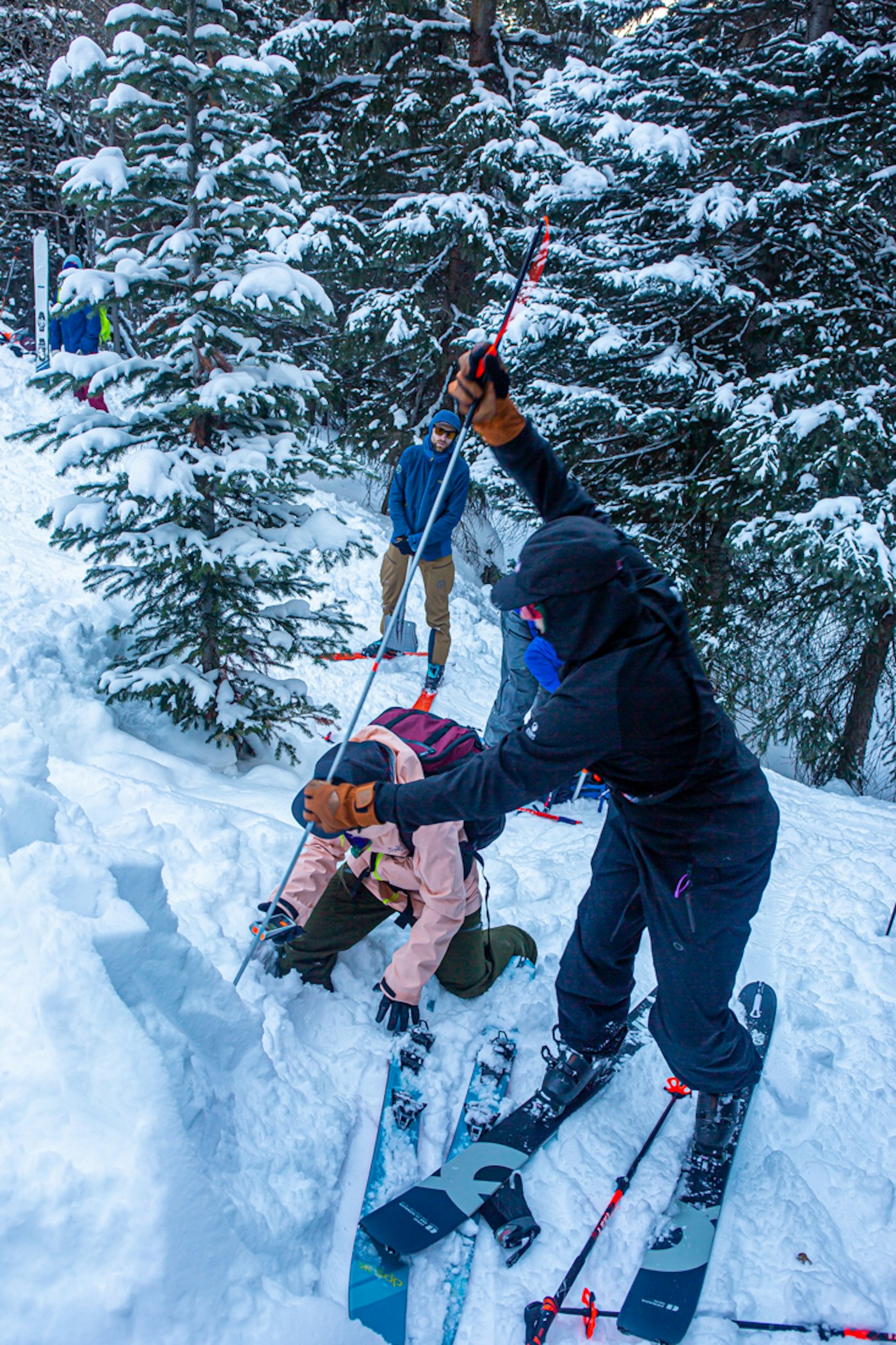
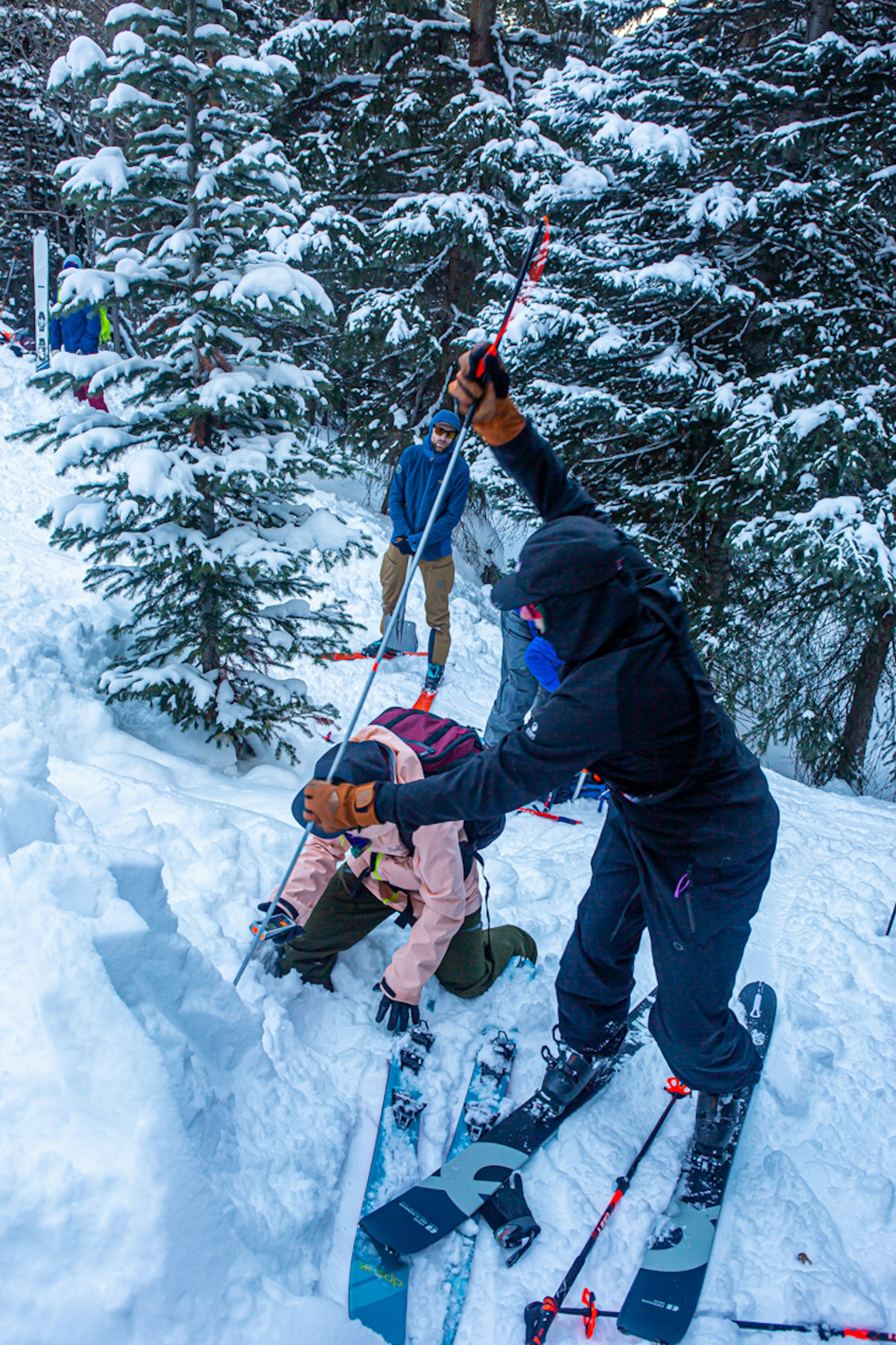
Two of our crew simulate an avalanche rescue out in the field with guide Ben Markhart keeping a close watch on time.
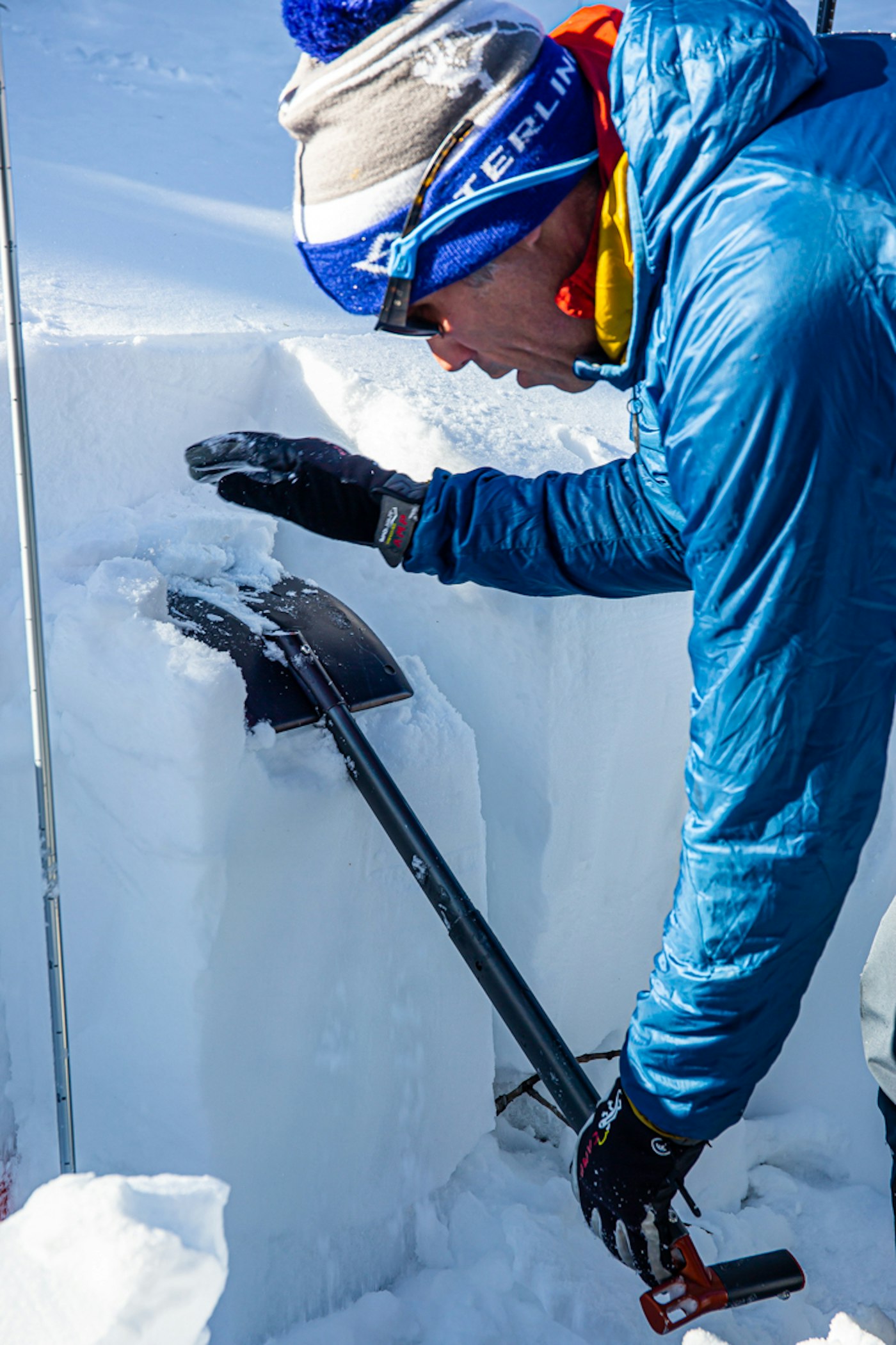
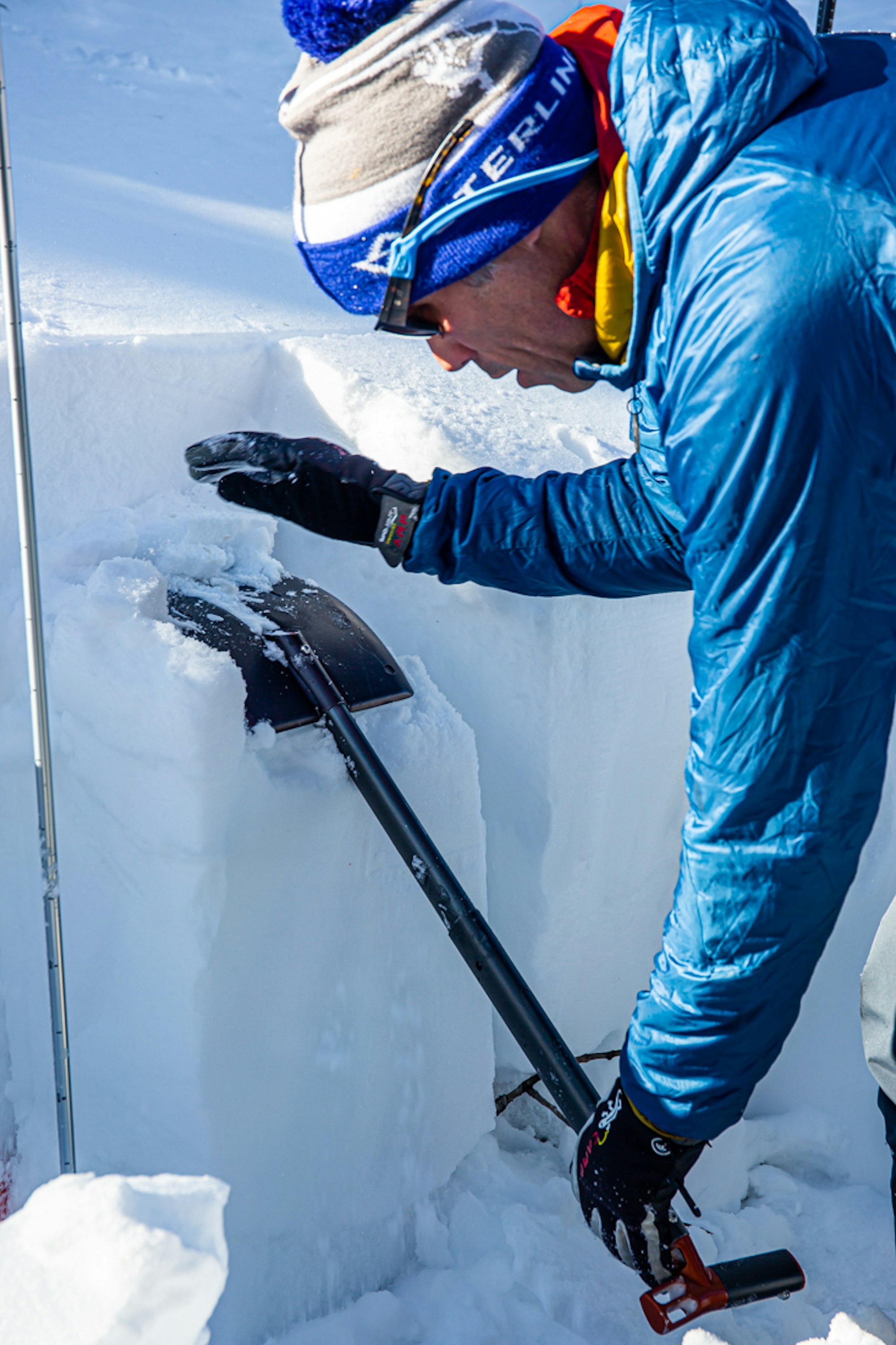
Guide Joey Thompson performs a stability test.
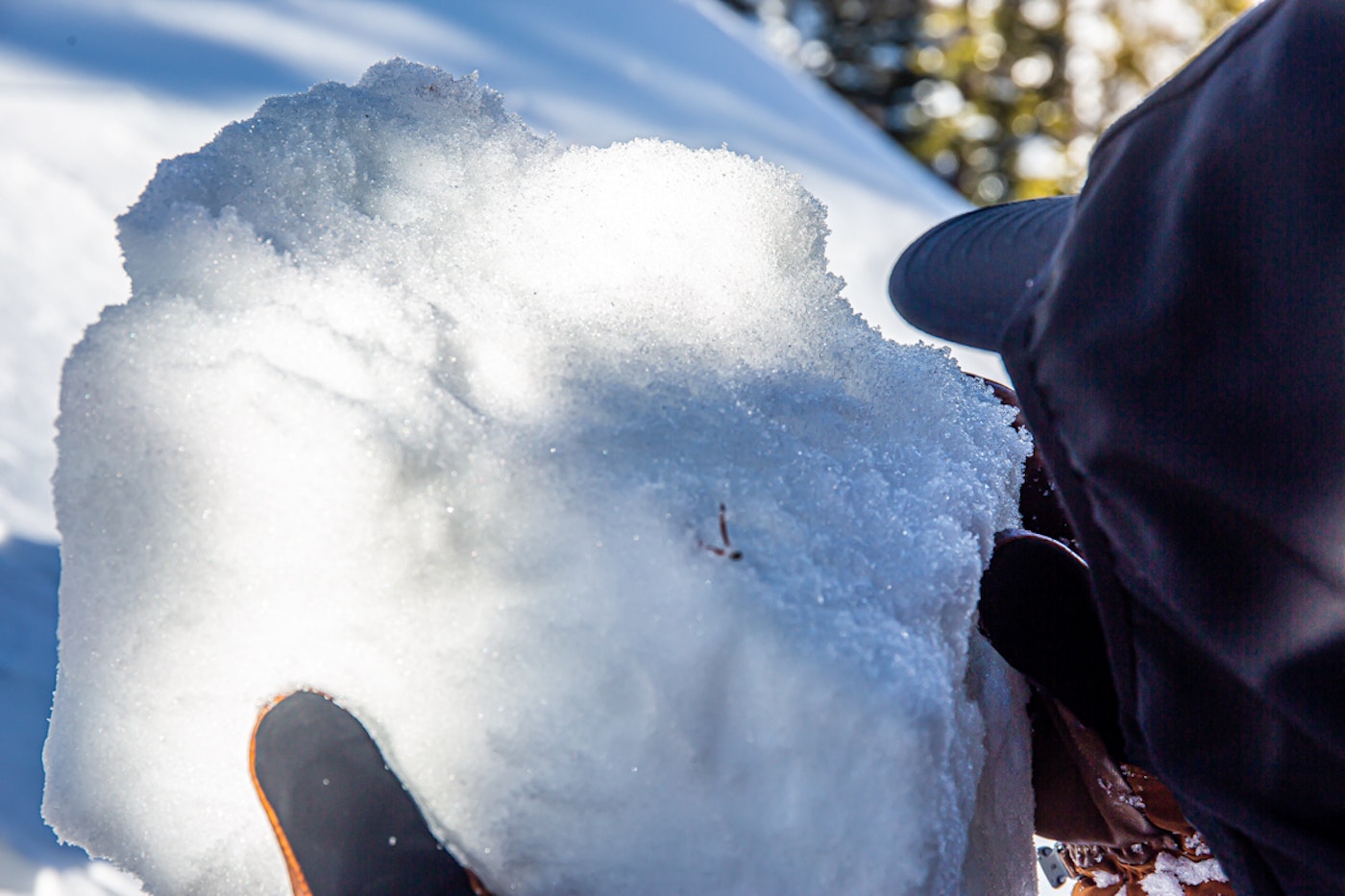
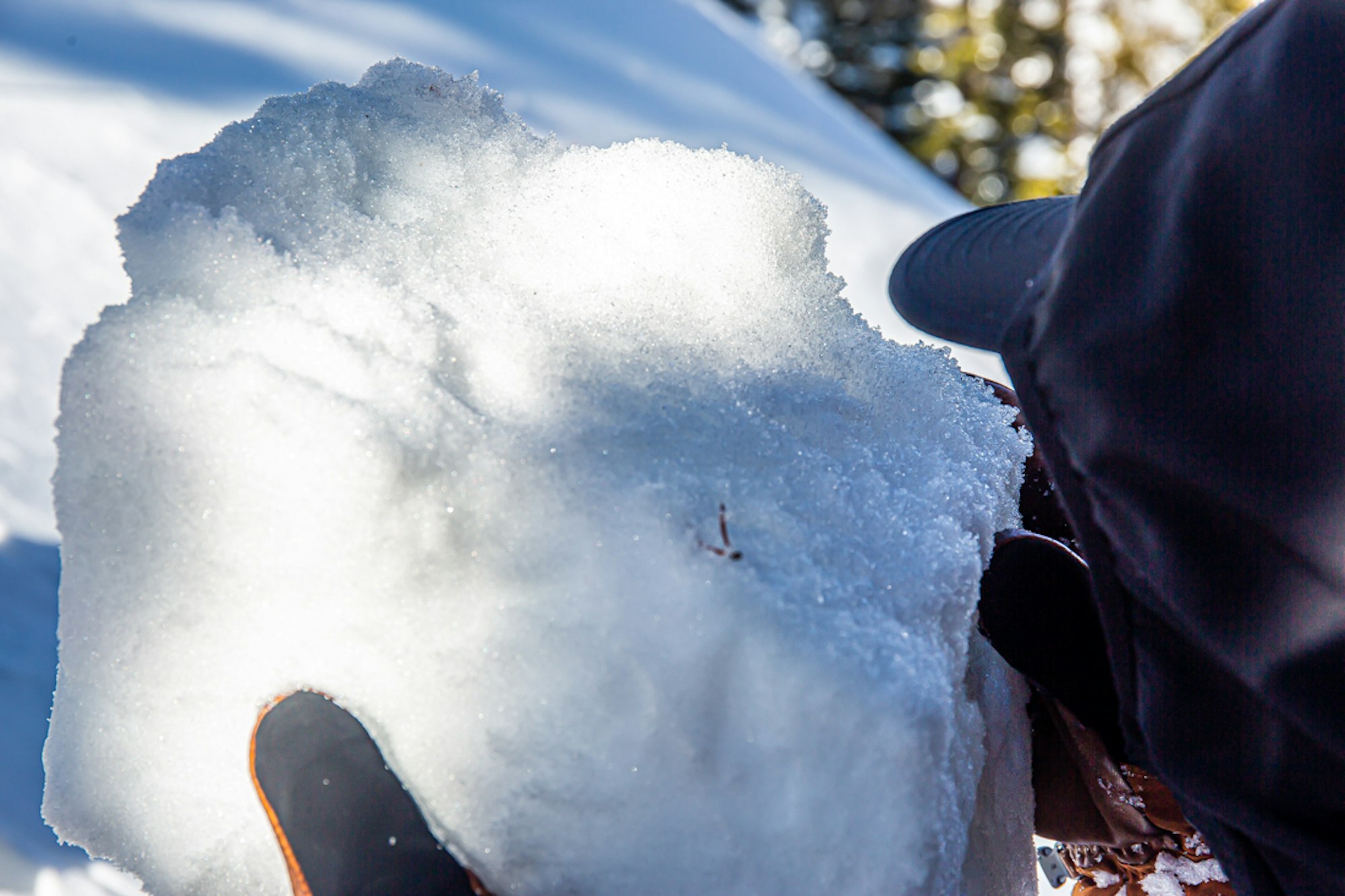
Facets in the snowpack create weak layers.
Pack accordingly
While you’ll be spending a lot of time in the classroom, you will be out in the field, putting all that new knowledge into practice, which means you’ll need the appropriate gear and outerwear to withstand whatever weather–sun, wind, snow or even rain–the mountains decide to throw at you. For our three days in Rocky Mountain National Park, we were met with chilly temps, high winds and a bit of snowfall.
You should already have the basics before you head to your AIARE 1 class: beacon, shovel and probe, as well as a backcountry touring setup–skis, touring bindings, boots, poles and skins–and a backpack to house it all in. Understanding your gear and how to properly use it all before you take the course not only puts you in your instructors’ good graces but also streamlines your success in the class.
Layers are key for a comfortable day in the backcountry. That extra puffy may seem like a waste of space while you’re skinnin’ and sweatin’ but as soon as your crew stops to assess the snowpack or transition to ski mode, your internal body temperature can plummet significantly.
Along with layers, having enough food and water is crucial to maintain your energy level all day so you can concentrate and participate to your fullest. According to Thompson, professional skiers need to eat about 500 calories an hour to keep up with their energy output.
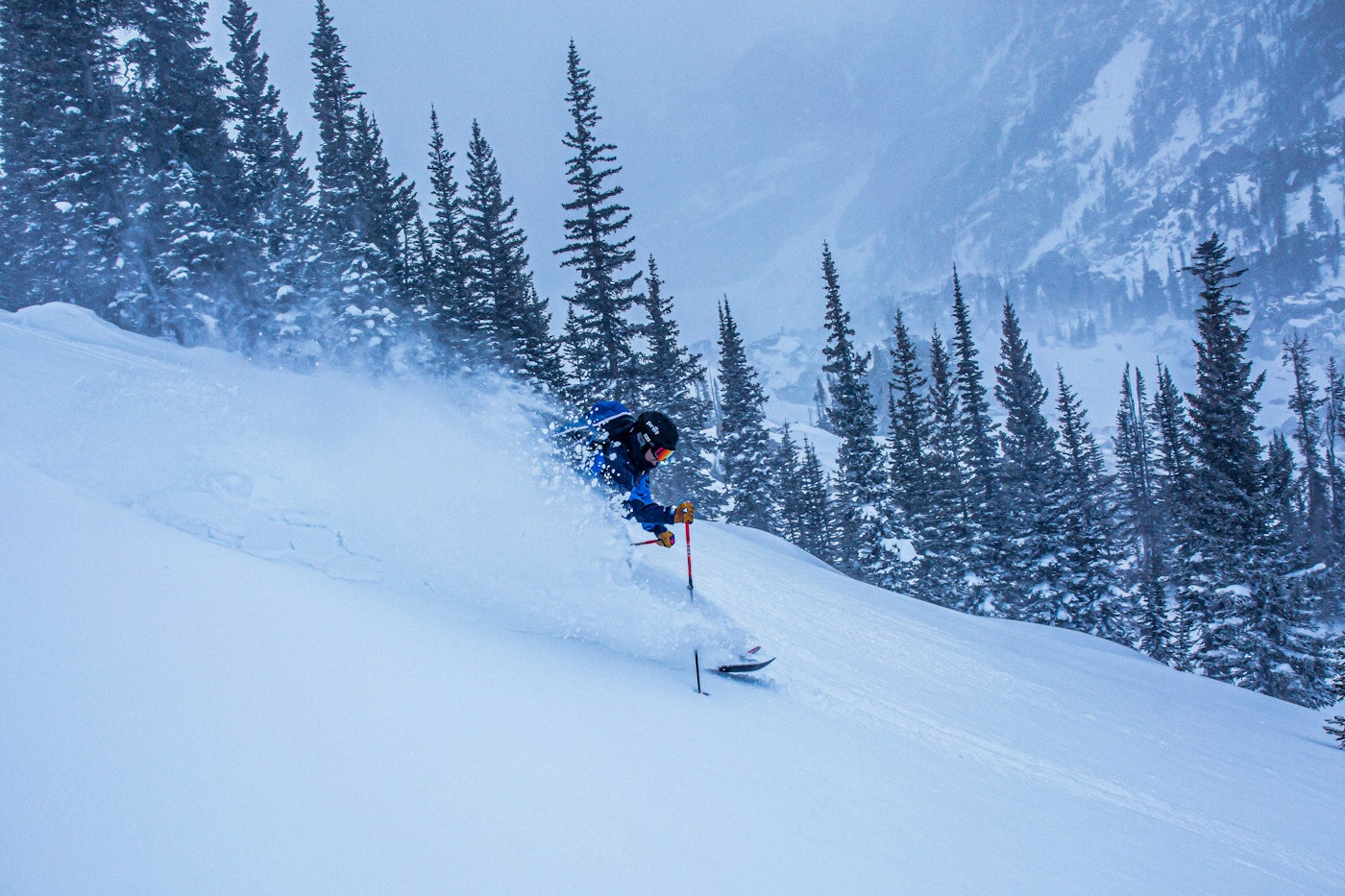
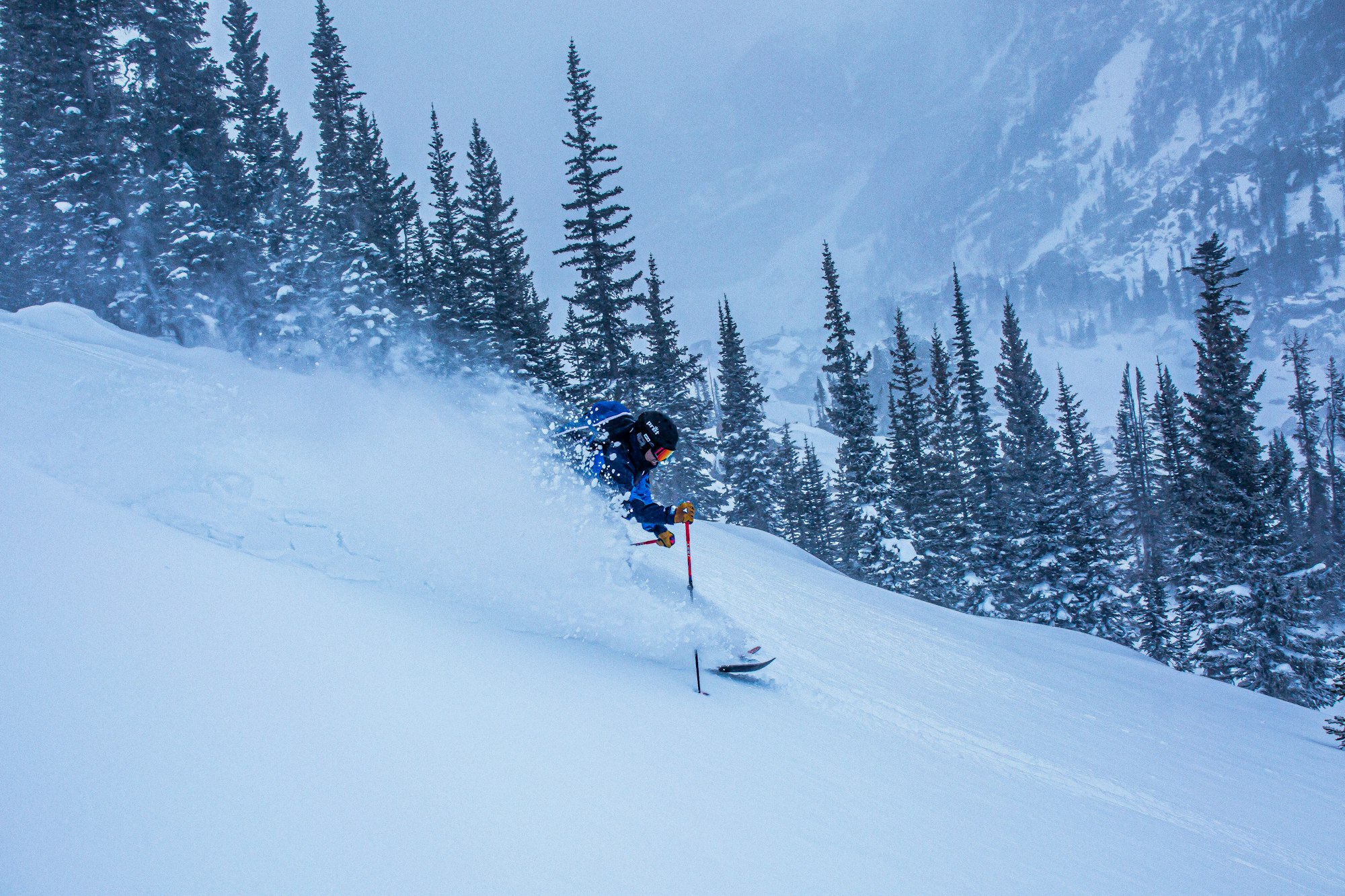
Cian O’Connor enjoying some wind-blown powder.
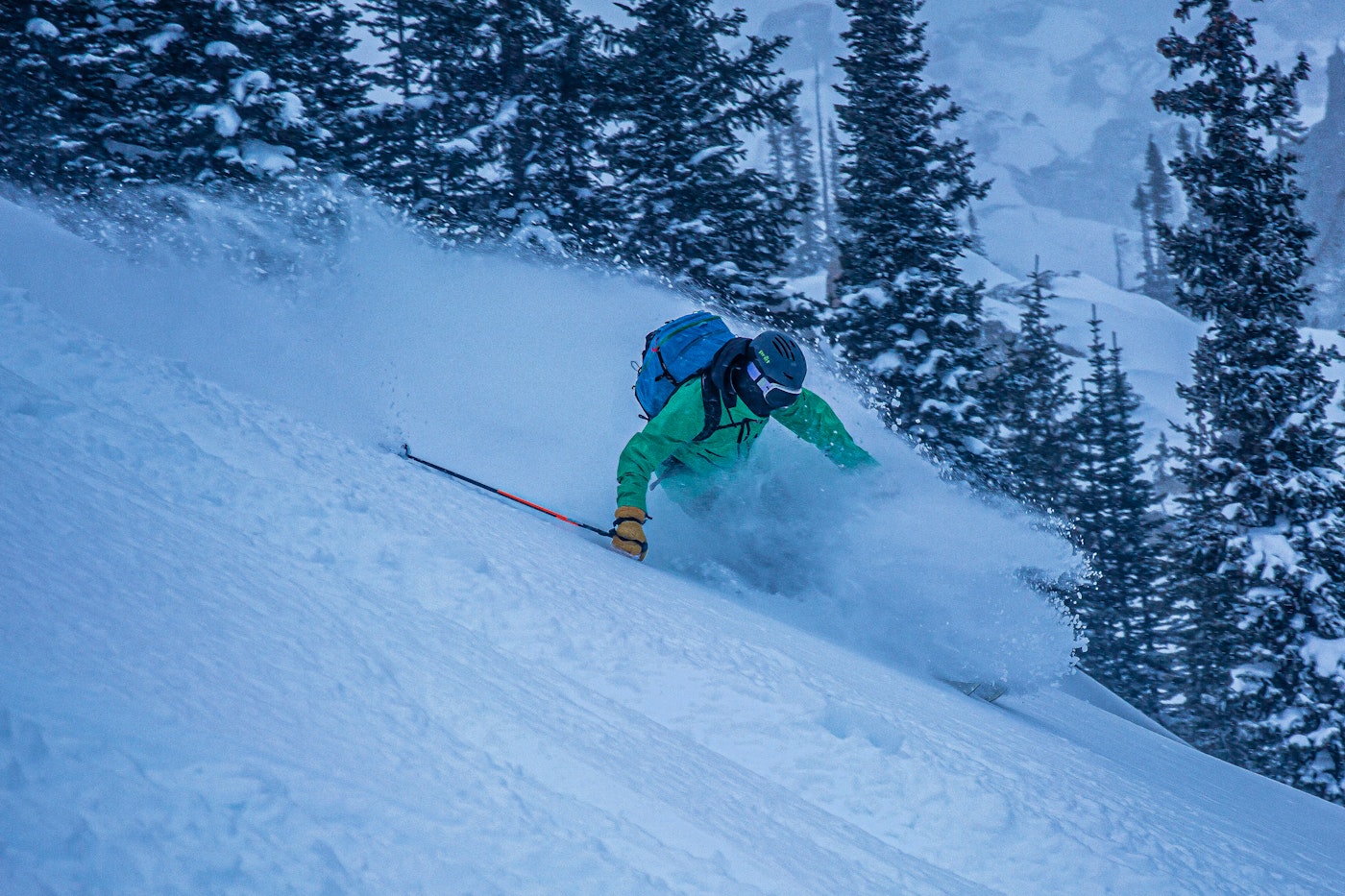
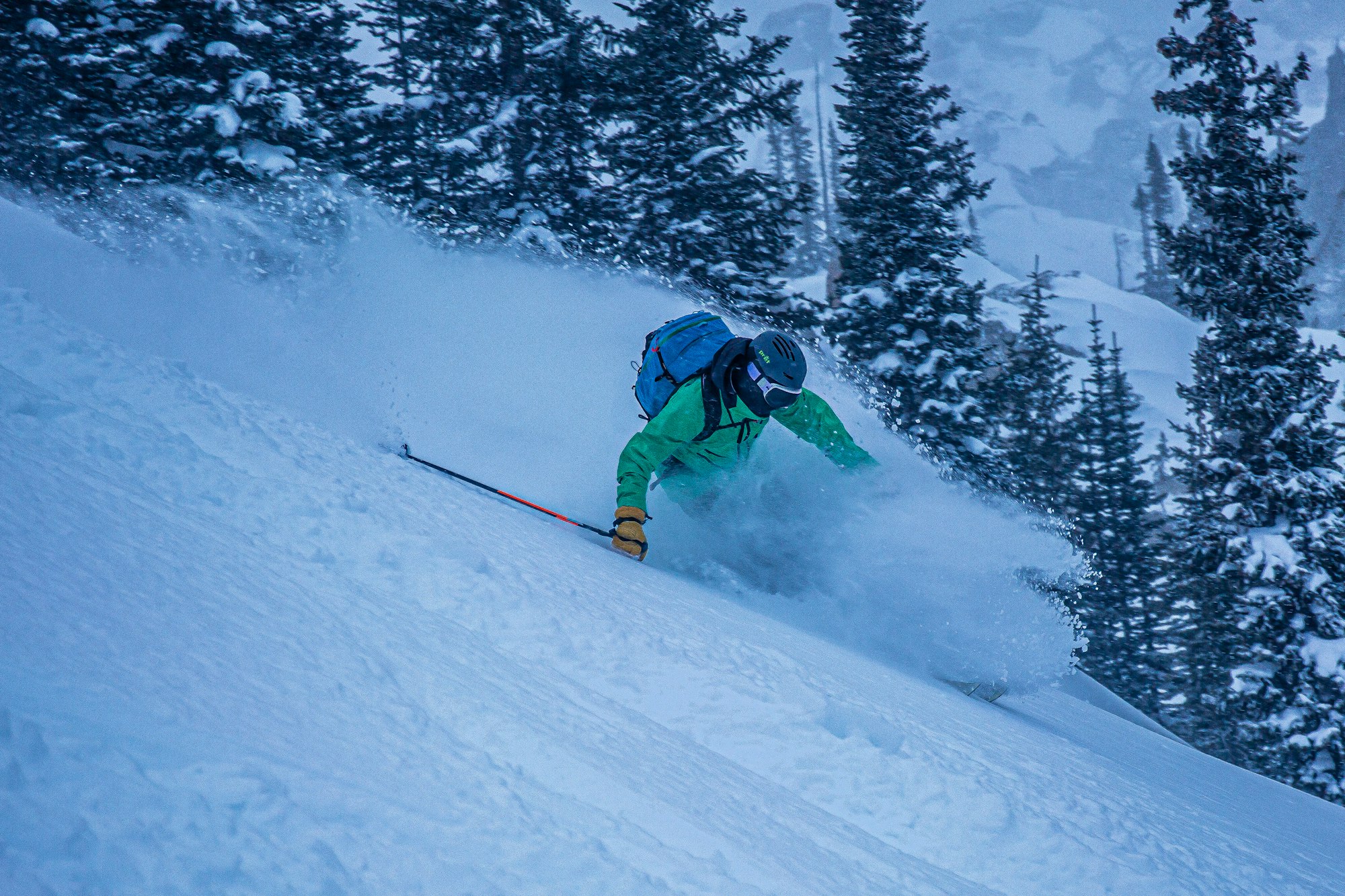
Art Director Gunter Jones.
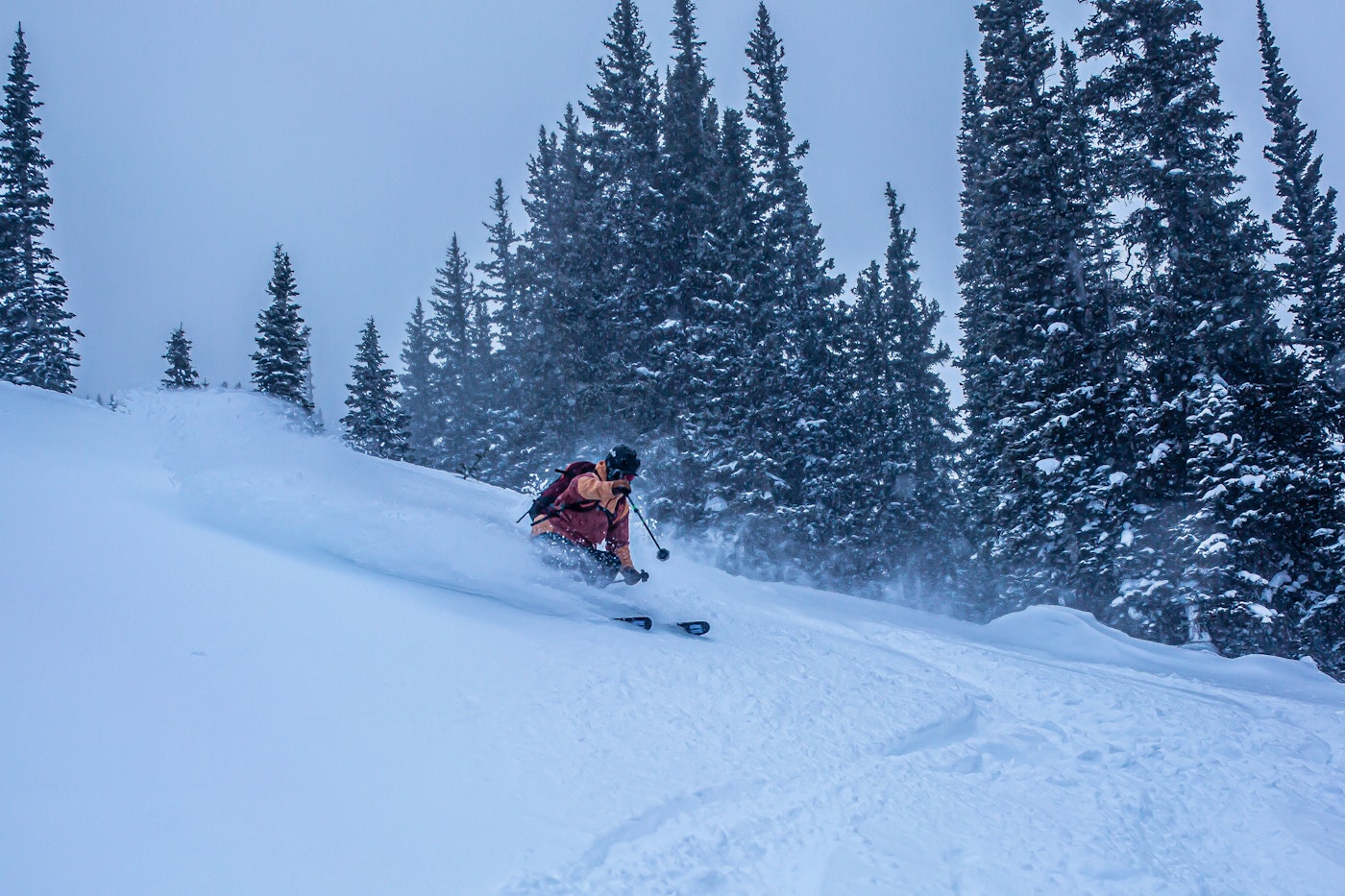
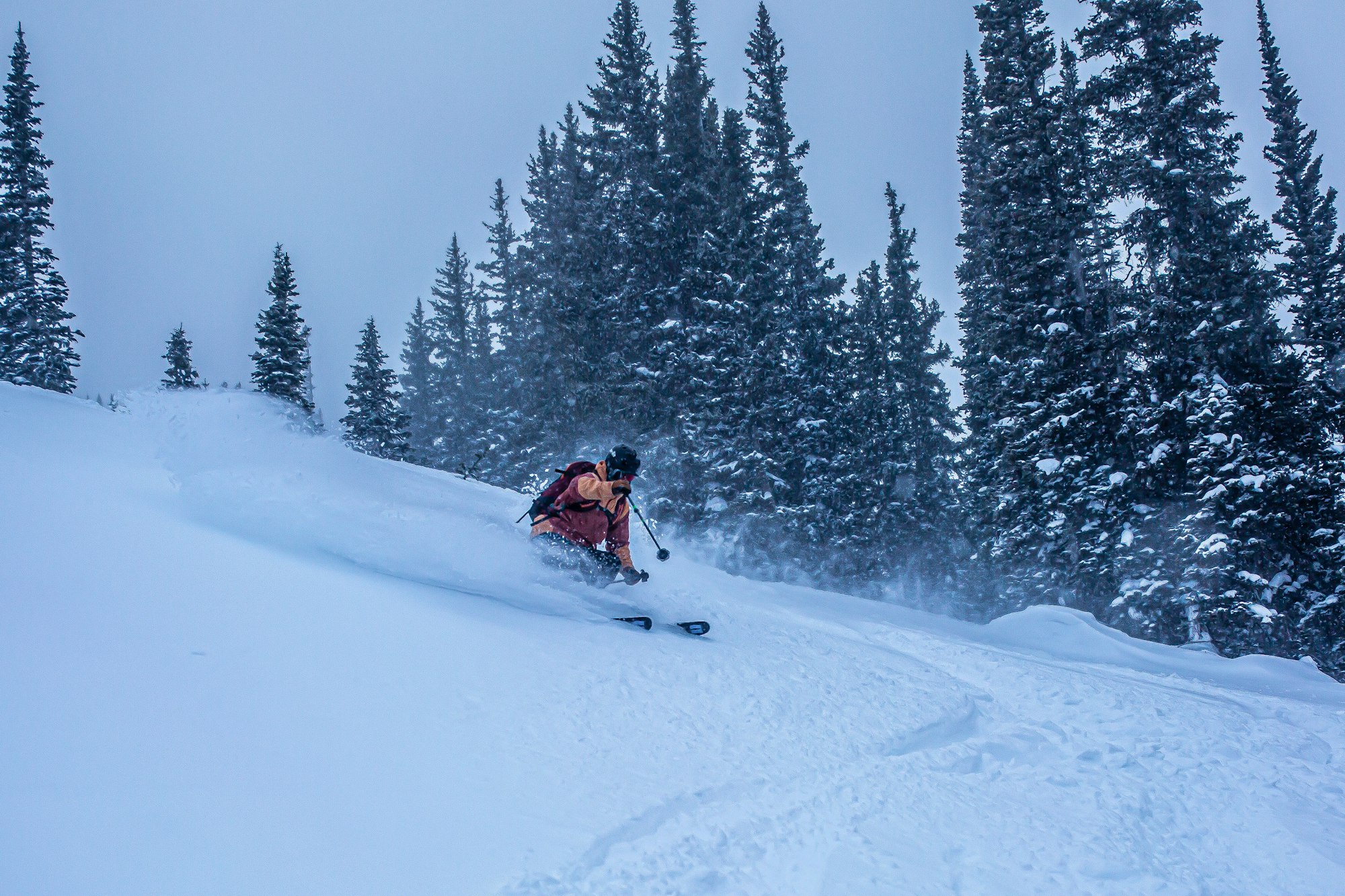
Online Editor Sam Taggart.
At the end of the day, we all want to have fun
Avalanche training is serious business, but that doesn’t mean you’re not going to have fun while you’re out there. When it comes down to it, we’re all–including the guides–out in the backcountry to have a good time, which is why I highly recommend taking the class with at least one other friend. Being able to take my first AIARE 1 class with all of my coworkers, who I am comfortable around and trust, allowed me to not only relax and enjoy the course more, I also felt more inclined to ask questions when I didn’t understand something without fear of judgment from strangers.
While it’s not common to ski a ton during avalanche courses, if you pay attention, are eager to learn and don’t push the boundaries set by your guides, they may reward you with tours into their own hidden stashes.
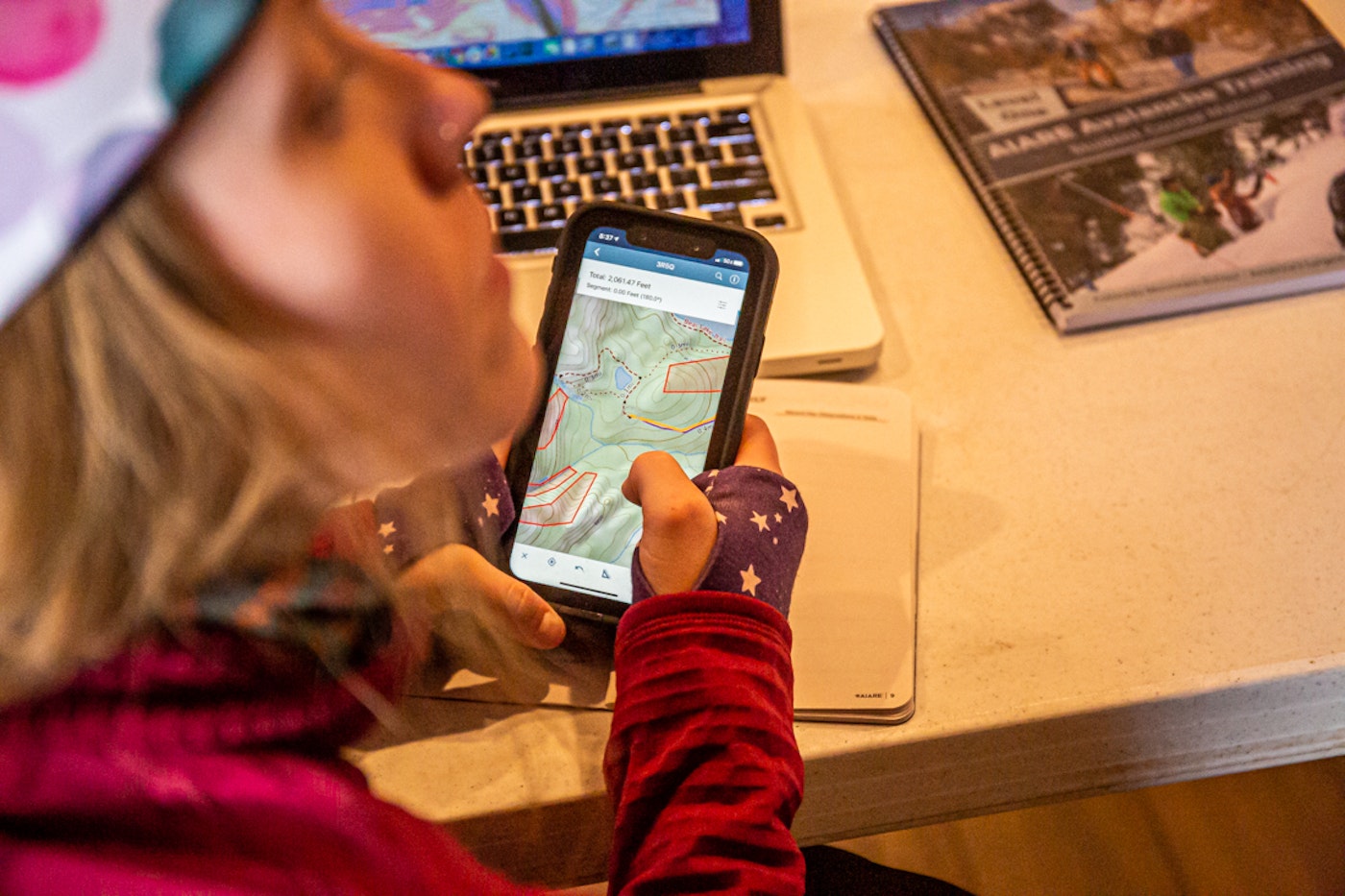
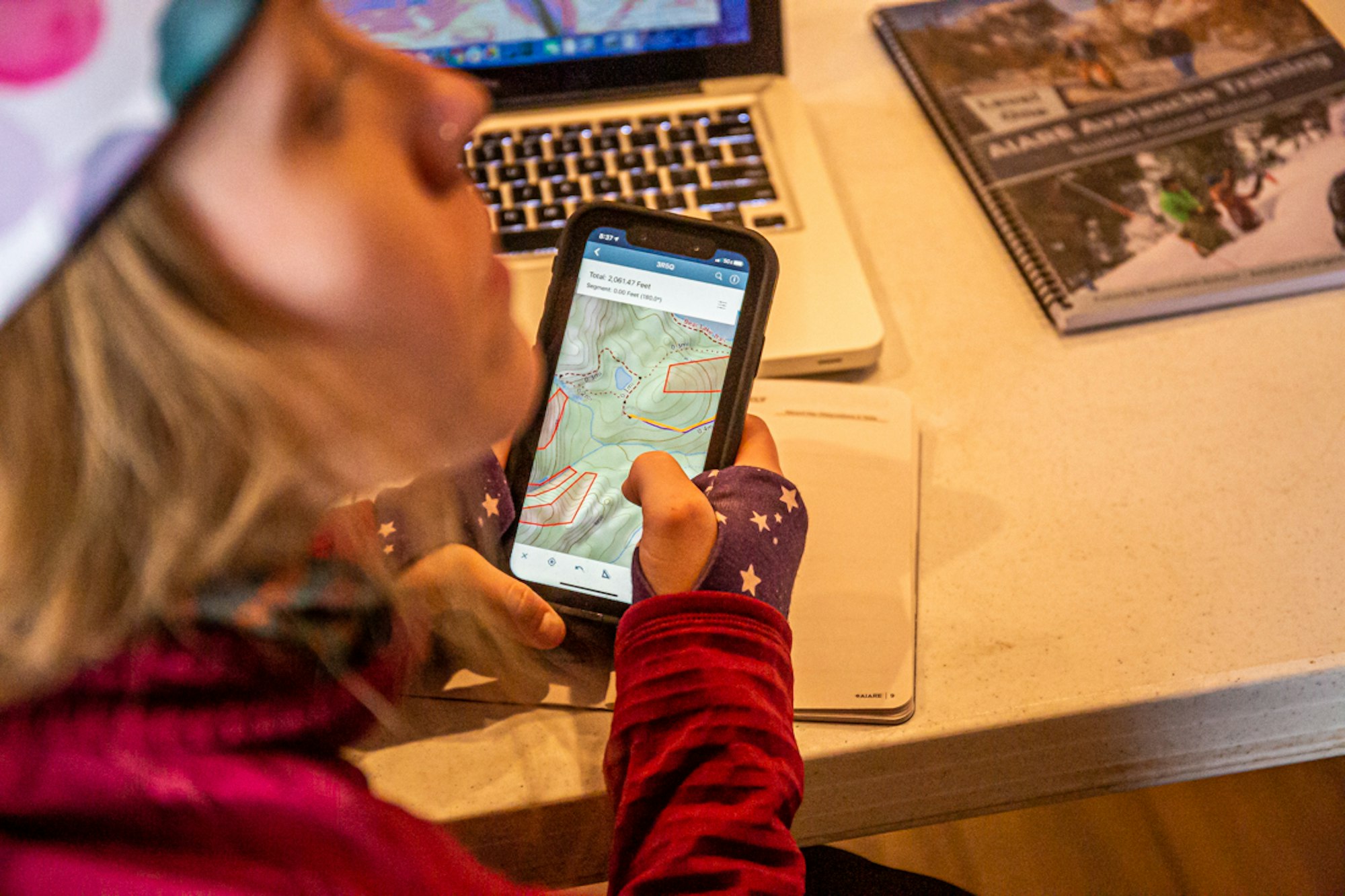
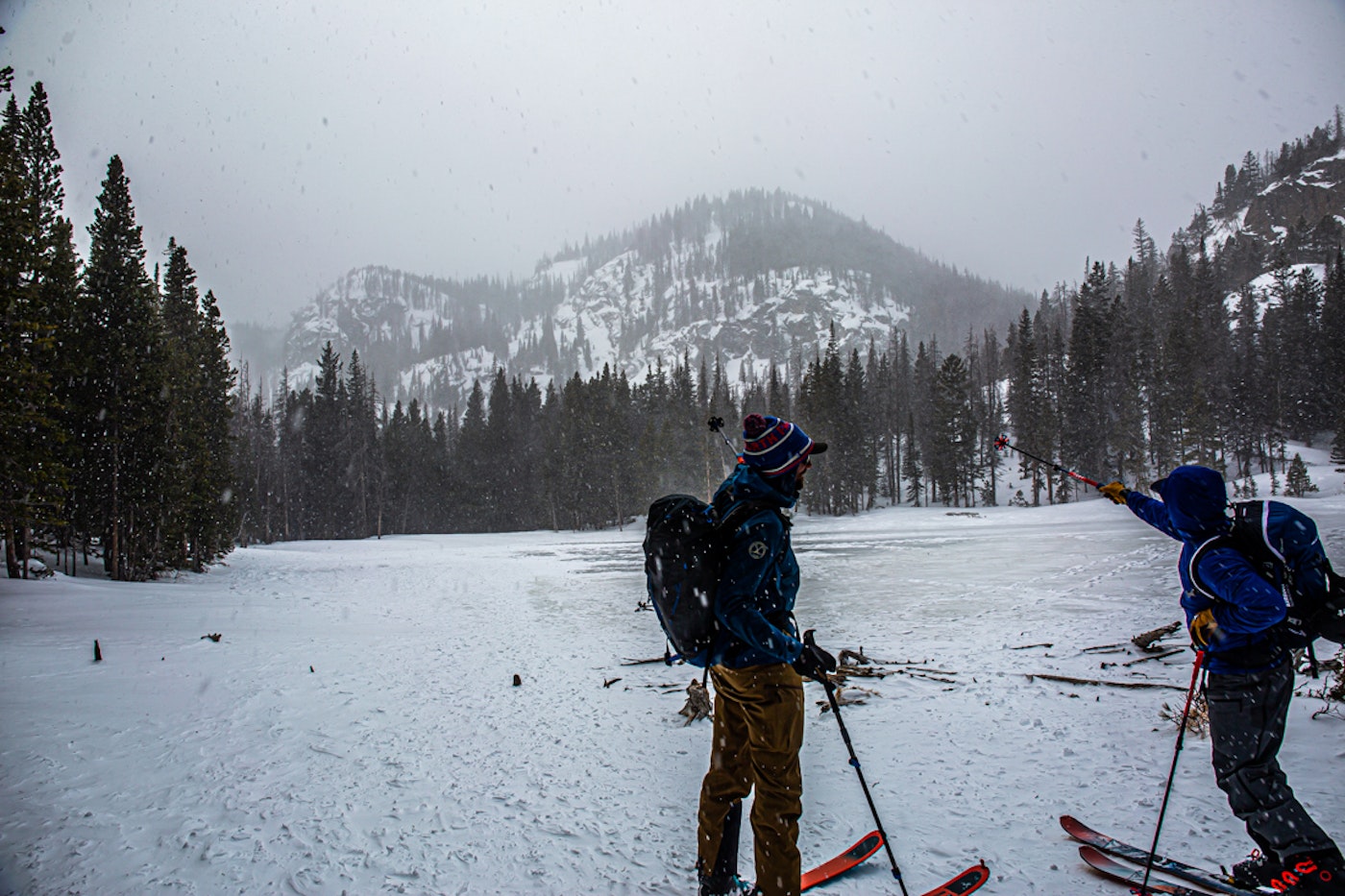
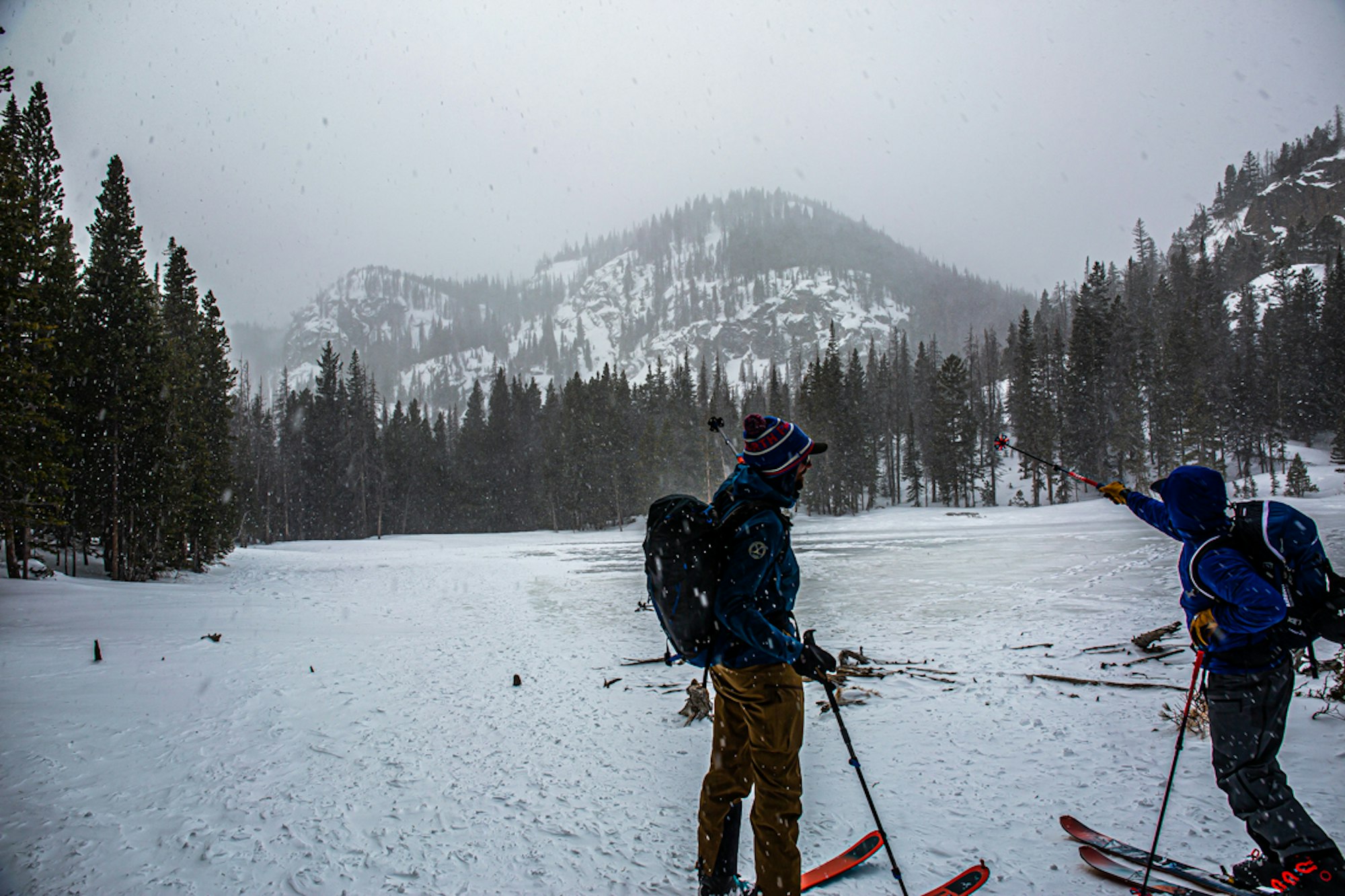
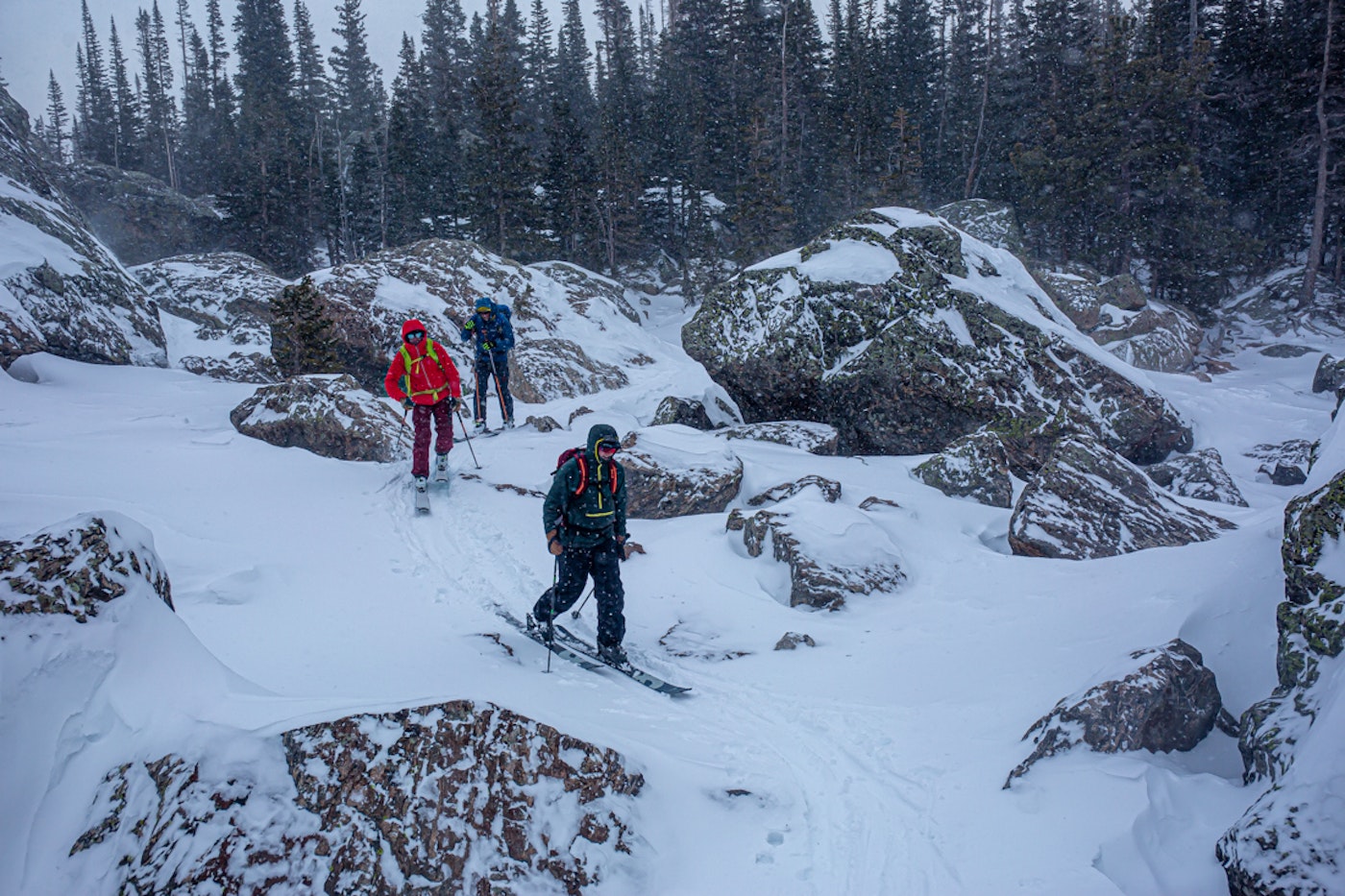
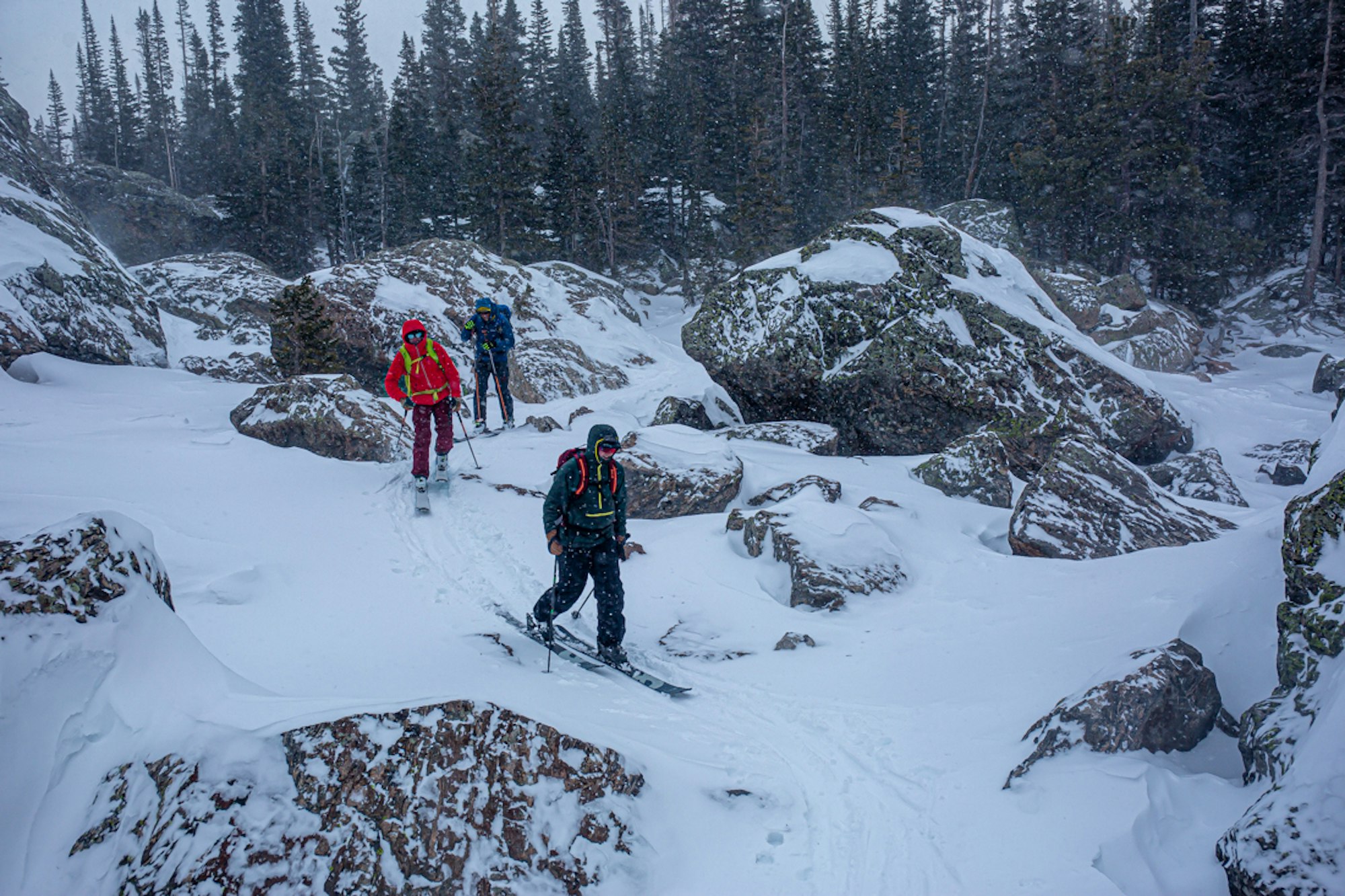
Practice makes perfect
Like I said before, AIARE 1 is an introductory course. The knowledge and skills you gain in the class are just the foundation for a lifetime of learning in the wilderness. The best way to continue your education is to get out in the field with mentors and peers. At the end of a resort ski day, head over to the transceiver park (assuming your local hill has one) to practice your beacon search. The next time you’re in the backcountry, dig a pit to identify the different layers in the snowpack and the problems that may arise from those layers. When traveling with a group, take turns setting the skin track–it takes years of practice to successfully and efficiently navigate to your destination and everyone in your group should be able to lead in the case of an emergency. The beauty of avalanche training is you can never have too much of it.
To find an avalanche class near you, visit the American Institute for Avalanche Research and Education’s website.
Where to: Estes Park
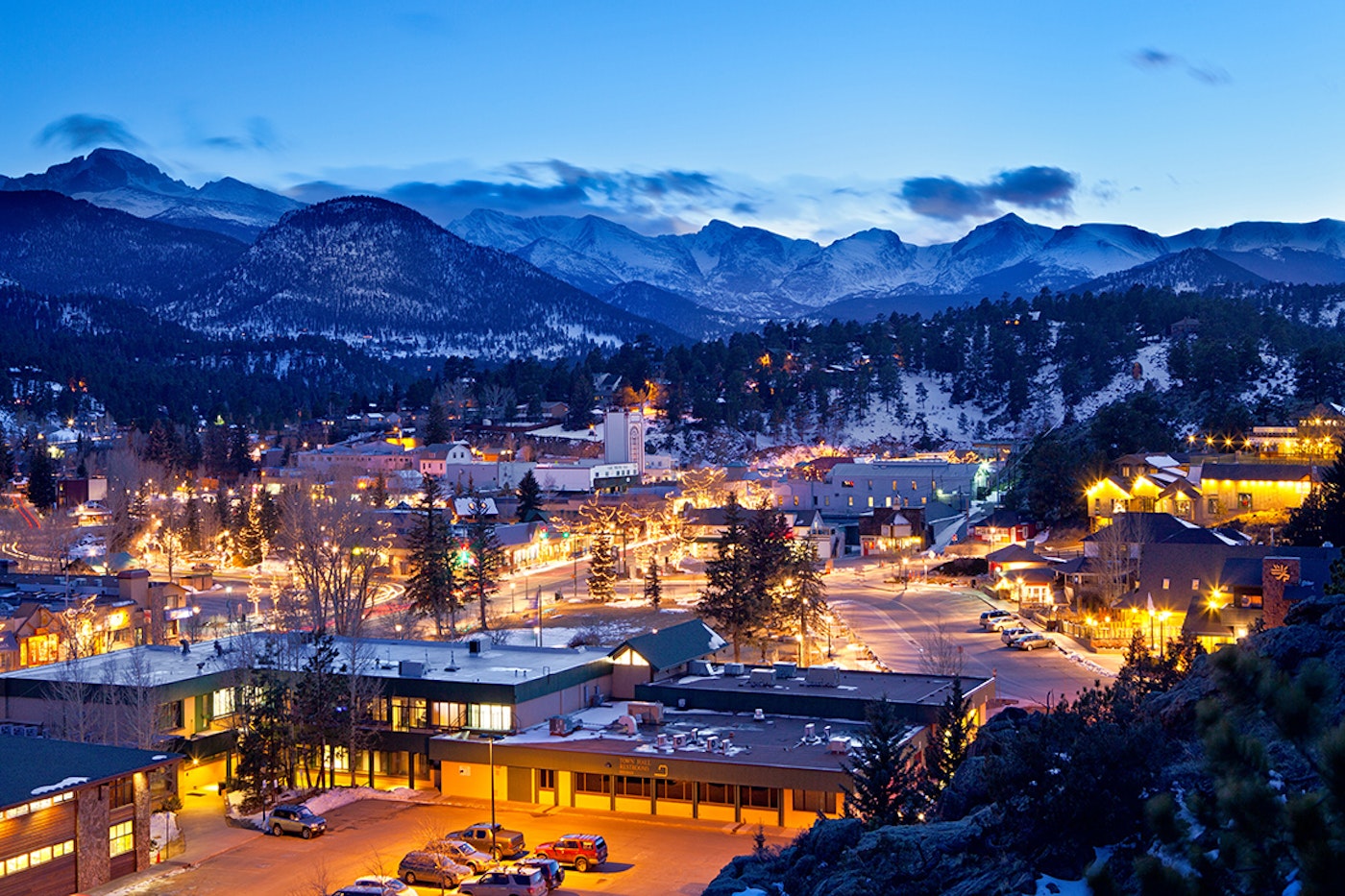
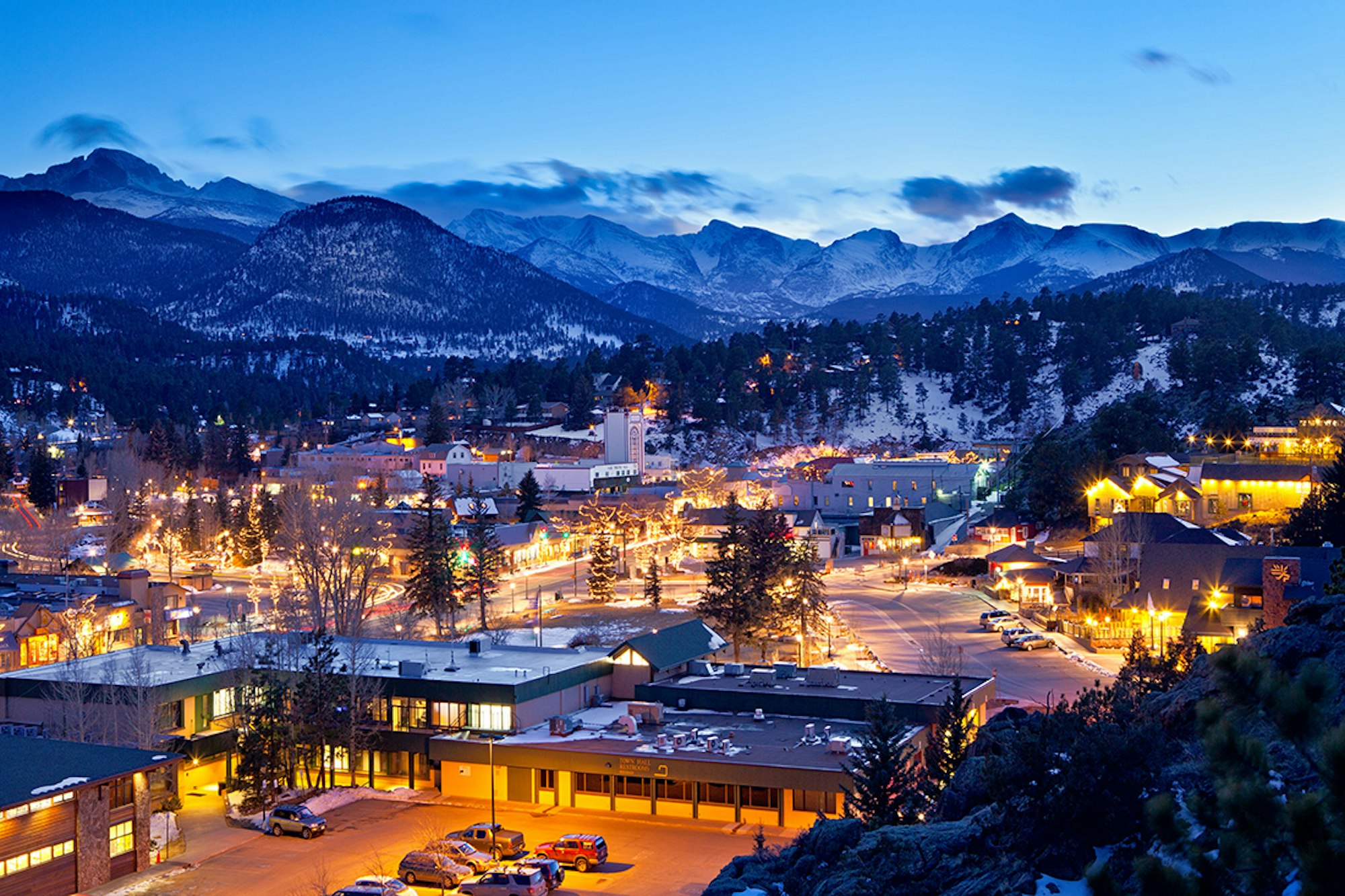
The beautiful town of Estes Park, Colorado. Photo: courtesy of Visit Estes Park
Estes Park, tucked into the mountains between Fort Collins and Boulder, is as a popular a town as any in Colorado during the summer. However, when the temperatures drop and the snow flies in the winter, the tourists retreat home and the area becomes a haven for backcountry skiing. Rocky Mountain National Park is located just west of the town limits and offers incredible skiing opportunities from November through June. Whether you’re taking an avalanche course with Colorado Mountain School or posting up for a few days of skiing mountaineering come spring, Estes Park is a perfect home base for tourers, and there’s no shortage of off-hill fun to be had in town.
Where to sleep: Alpine Trail Ridge Inn
Our crew based out of the Alpine Trail Ridge Inn located a stone’s throw from the entrance to Rocky Mountain National Park. The inn offers a rustic motel vibe with recently renovated rooms, high-speed wifi access (a separate modem is included in each room) and a hot tub on-site for the ultimate après experience after a full day in the park.
Where to eat: Rock Inn Mountain Tavern
The Rock Inn Mountain Tavern is a must-visit for anyone spending time in Estes Park. Guests are greeted by two giant wood-burning stoves that create as cozy an atmosphere as you could imagine. The tavern was built in 1937 during the “Big Band Era,” and swing bands would come to serenade residents deep into the night. Today, live music is still a staple at the Rock Inn, and guests can enjoy a variety of dishes while enjoying tunes from local musicians.
Where to drink: The Barrel
The Barrel, an upscale beer garden found just outside the Park, offers up a variety of craft beer and cocktails sure to wet your whistle and provide a reward for your backcountry skiing efforts. Owners Ingrid and Lou Bush provide a welcoming atmosphere, and their passion for the craft beer industry is palpable. Inside, you’ll find a billiards table as well as plentiful kisses from Happy, the resident bar pooch.

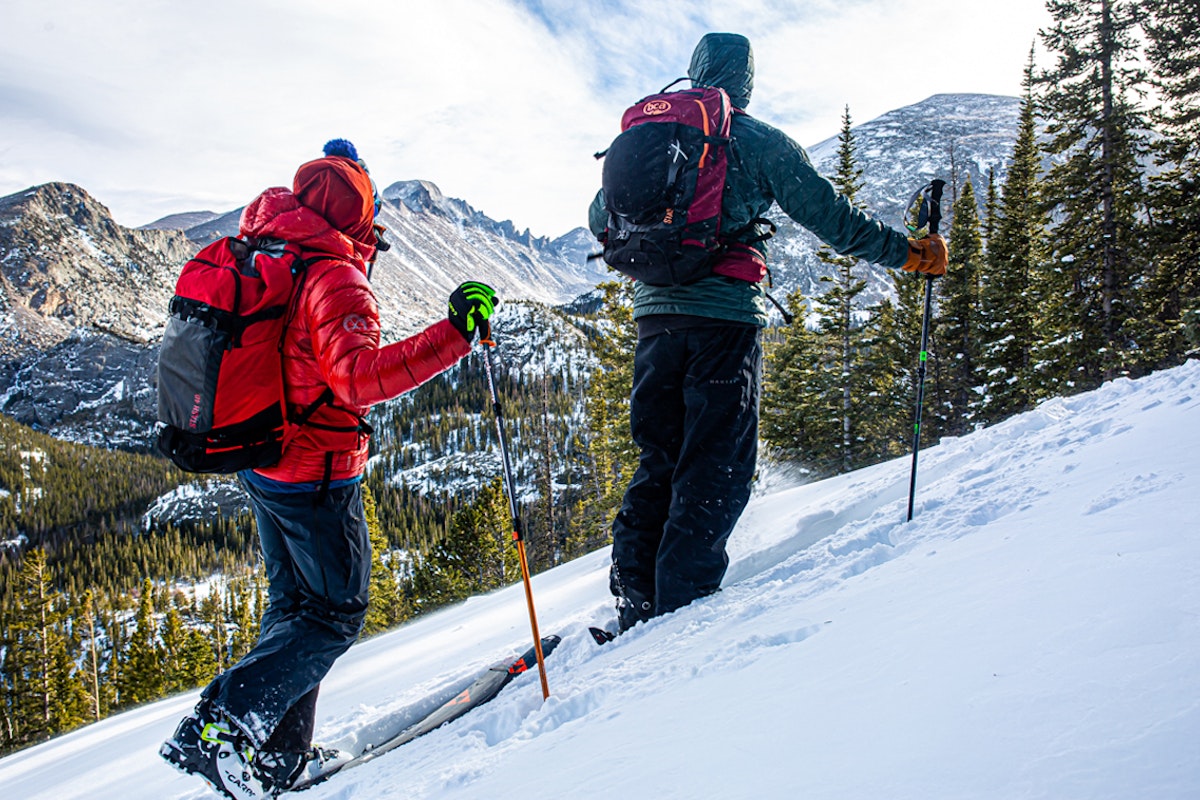
![[GIVEAWAY] Win a Head-to-Toe Ski Setup from IFSA](https://www.datocms-assets.com/163516/1765920344-ifsa.jpg?w=200&h=200&fit=crop)
![[GIVEAWAY] Win a Legendary Ski Trip with Icelantic's Road to the Rocks](https://www.datocms-assets.com/163516/1765233064-r2r26_freeskier_leaderboard1.jpg?w=200&h=200&fit=crop)

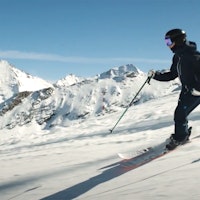
![[GIVEAWAY] Win a Legendary Ski Trip with Icelantic's Road to the Rocks](https://www.datocms-assets.com/163516/1765233064-r2r26_freeskier_leaderboard1.jpg?auto=format&w=400&h=300&fit=crop&crop=faces,entropy)




![[GIVEAWAY] Win a Head-to-Toe Ski Setup from IFSA](https://www.datocms-assets.com/163516/1765920344-ifsa.jpg?auto=format&w=400&h=300&fit=crop&crop=faces,entropy)


